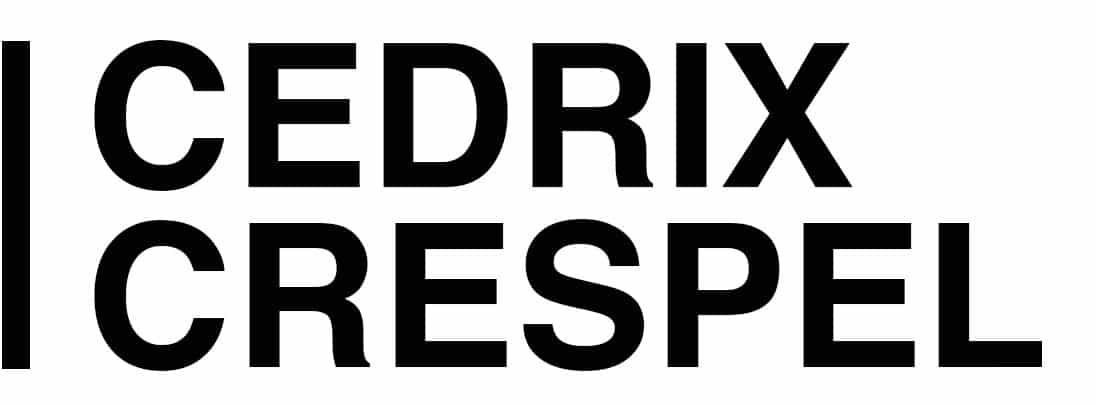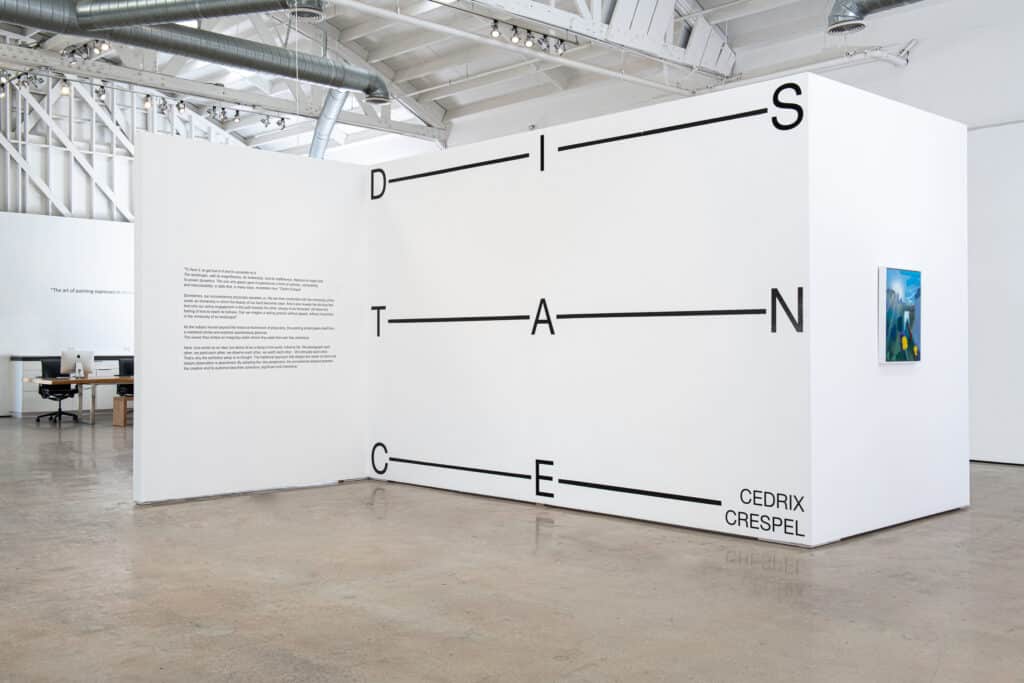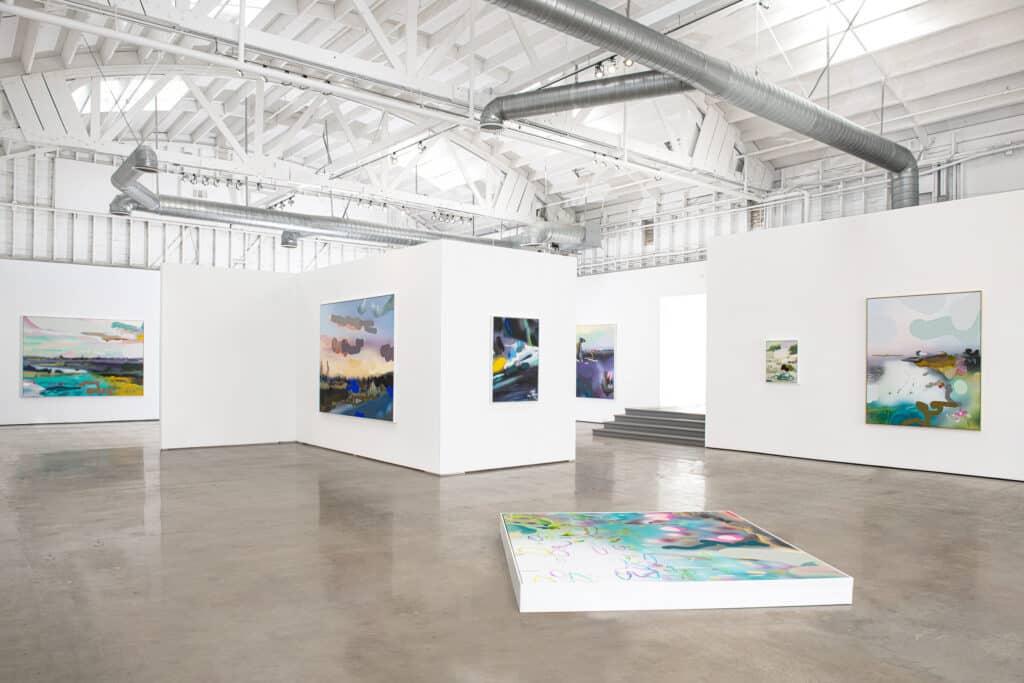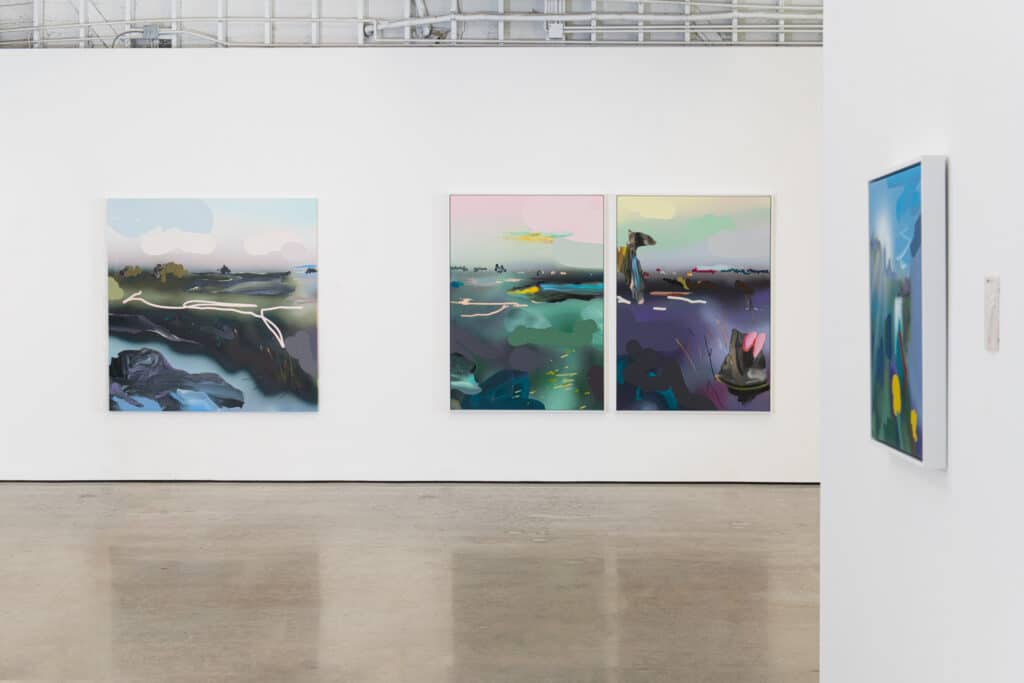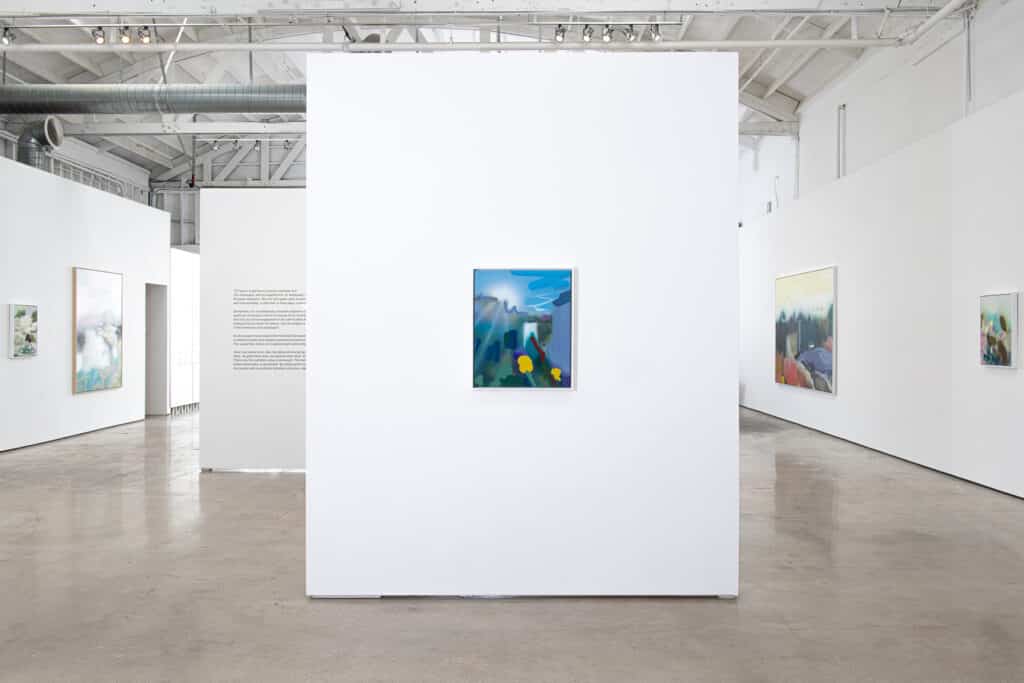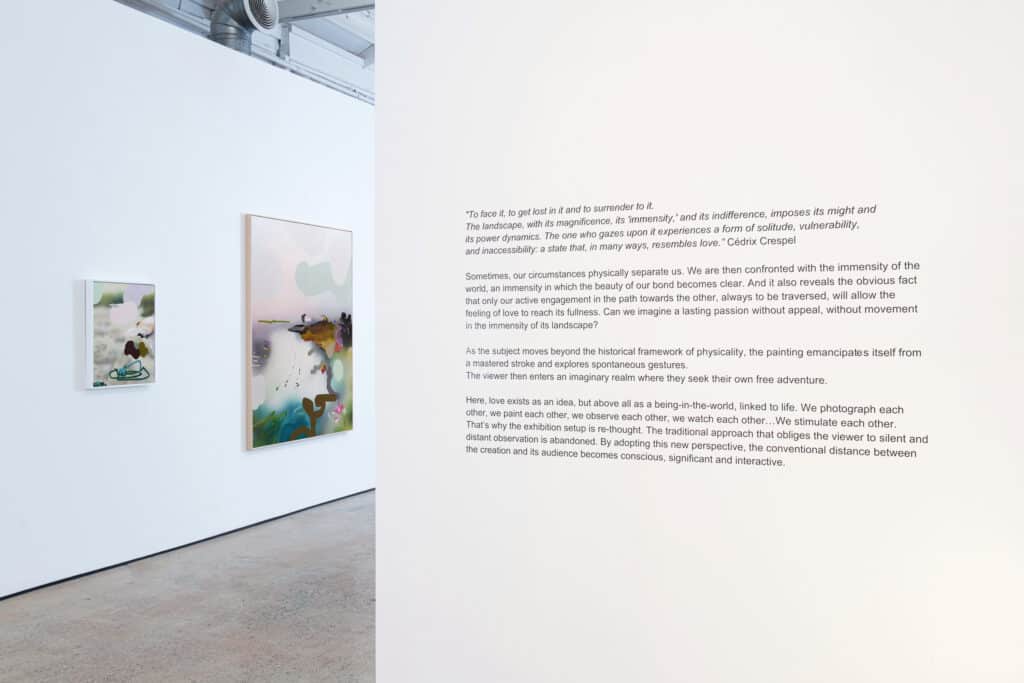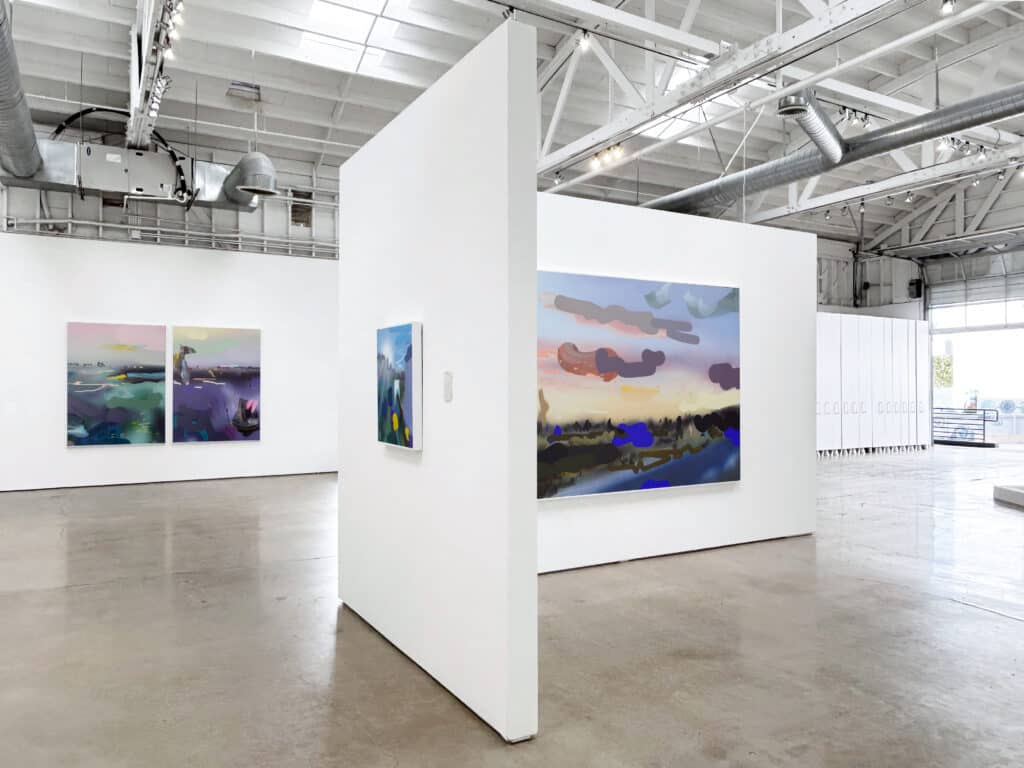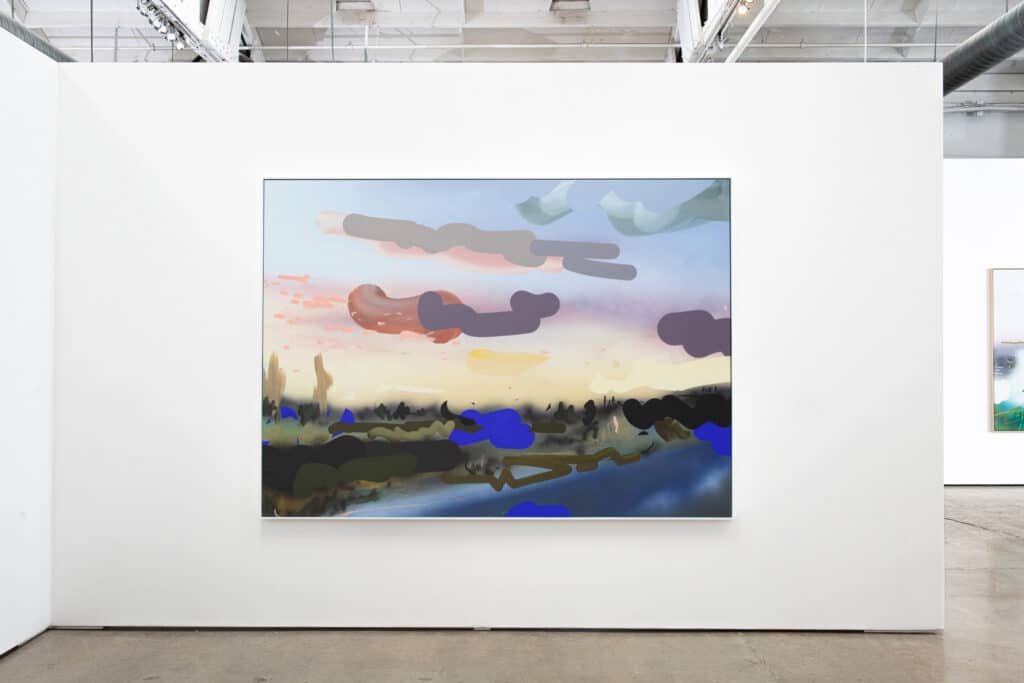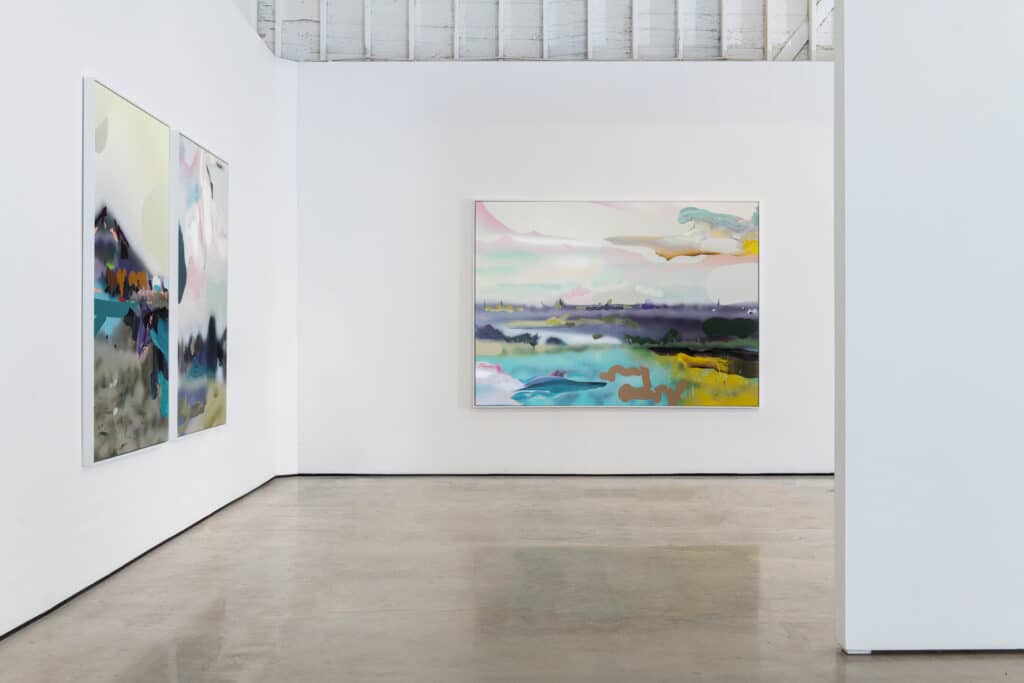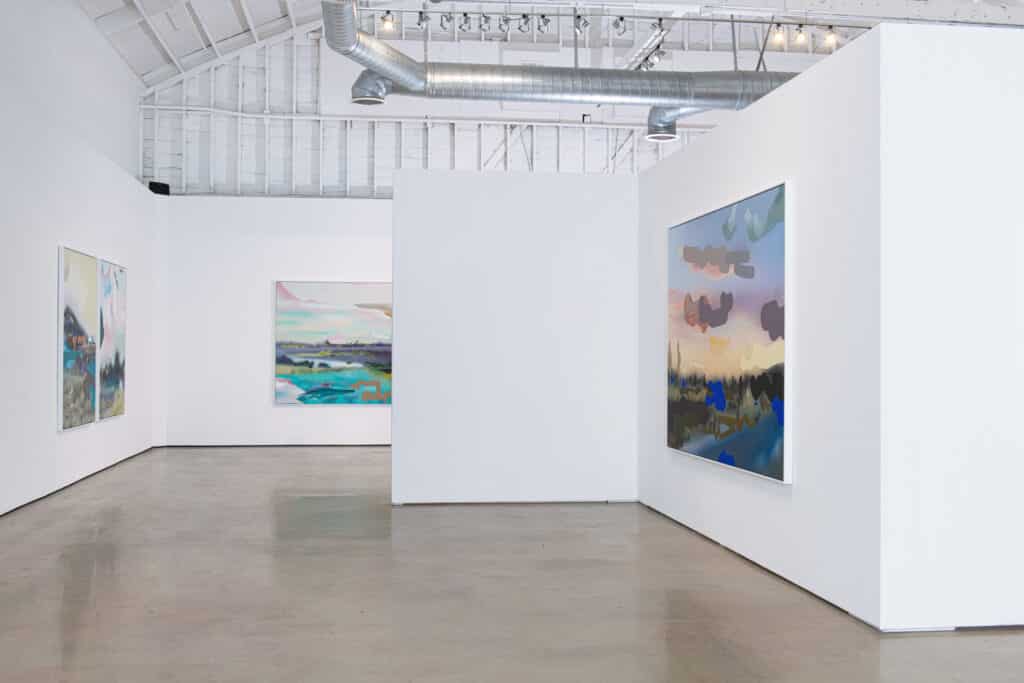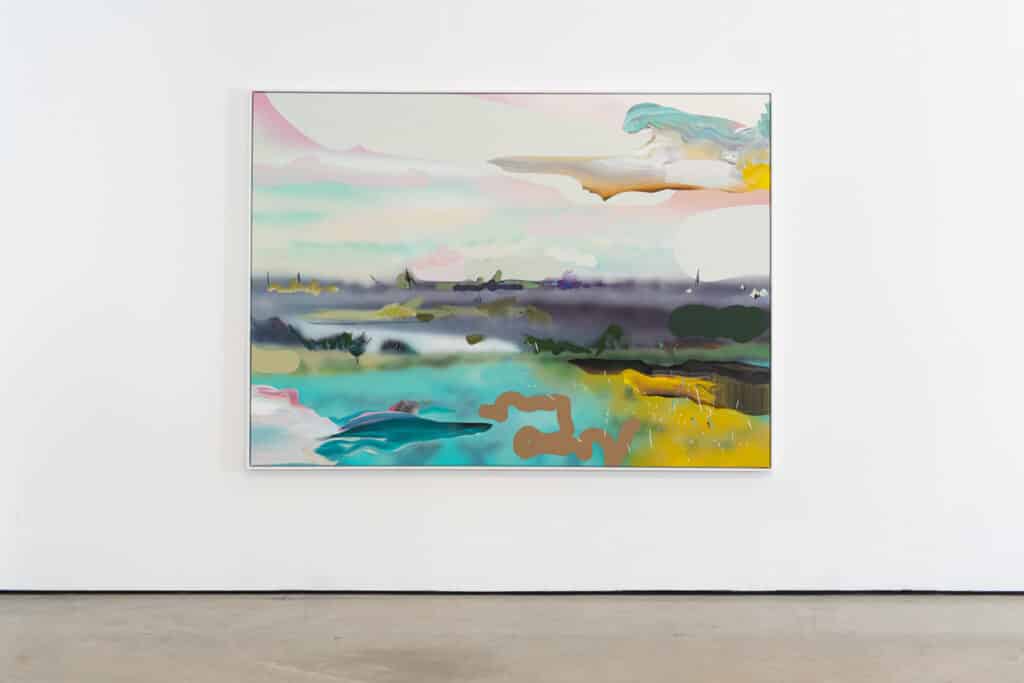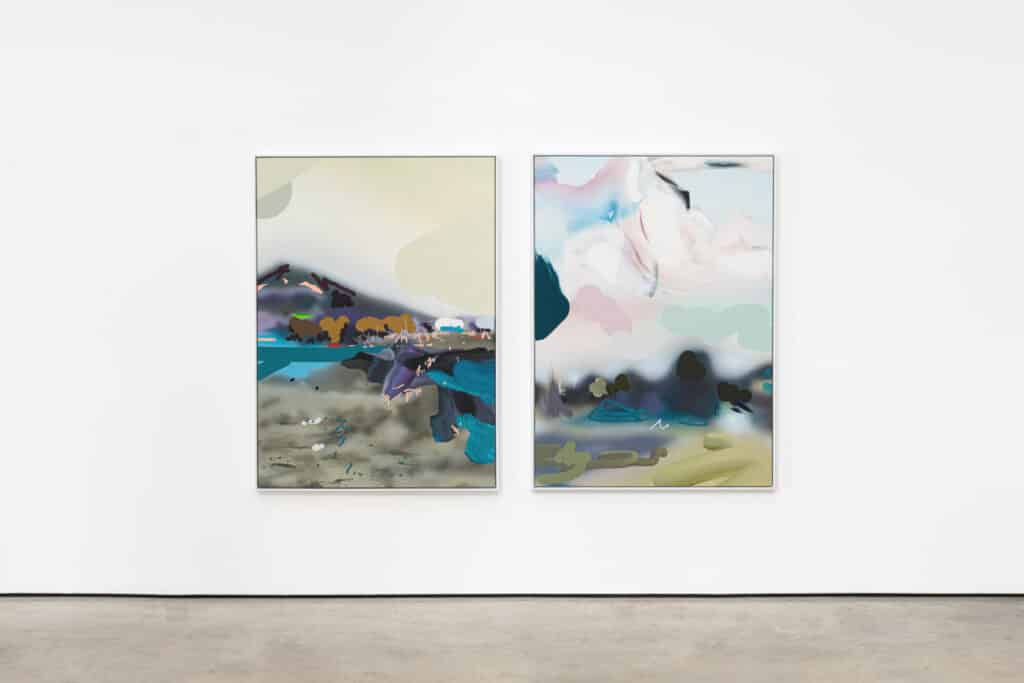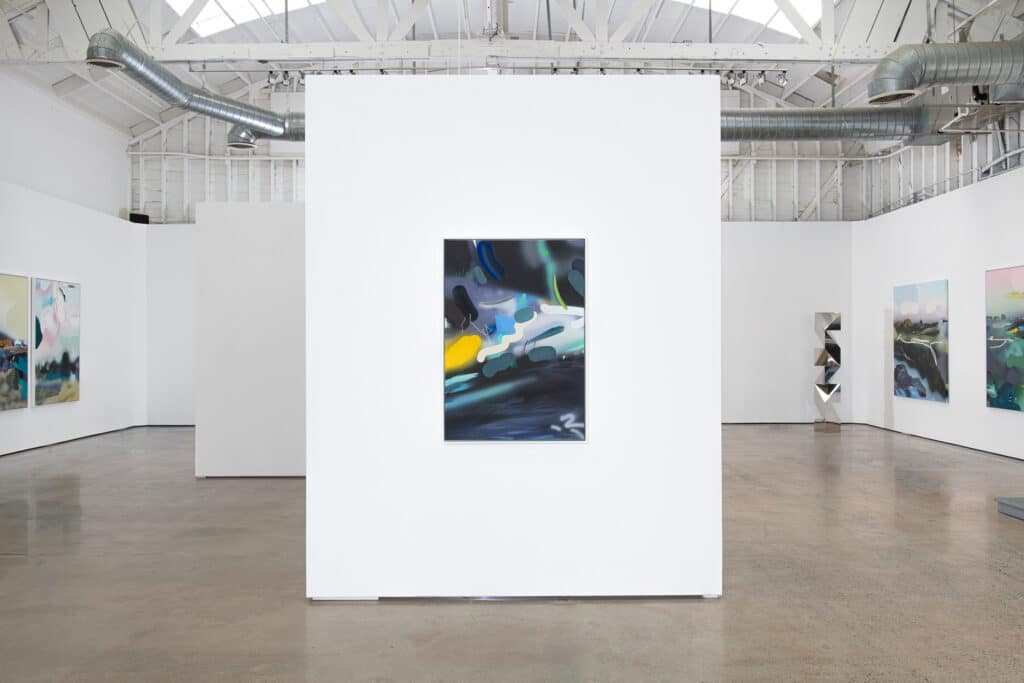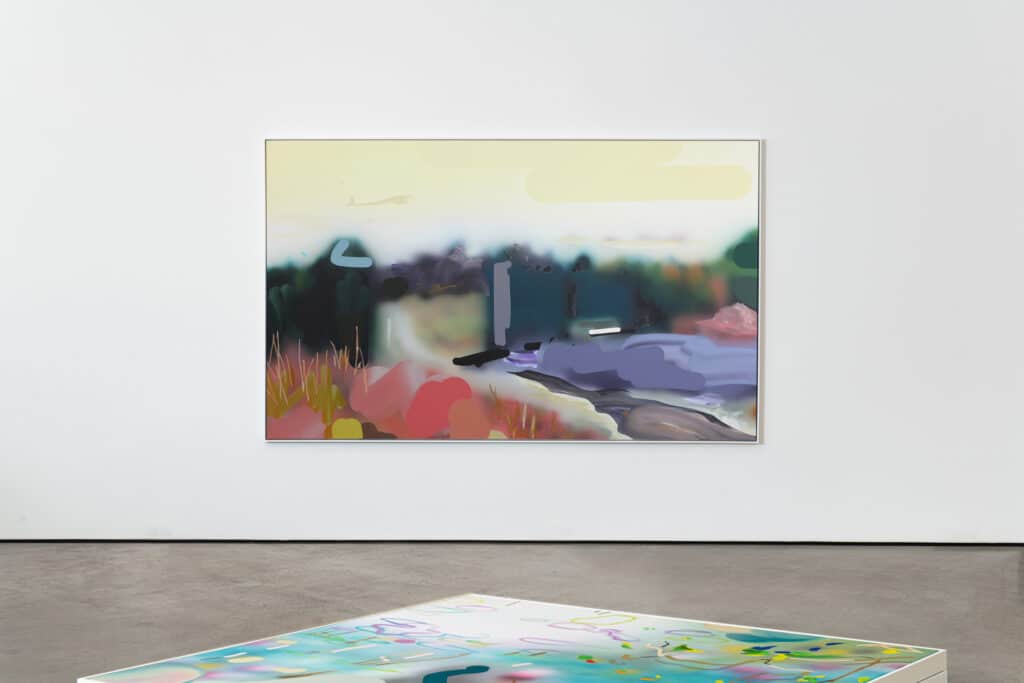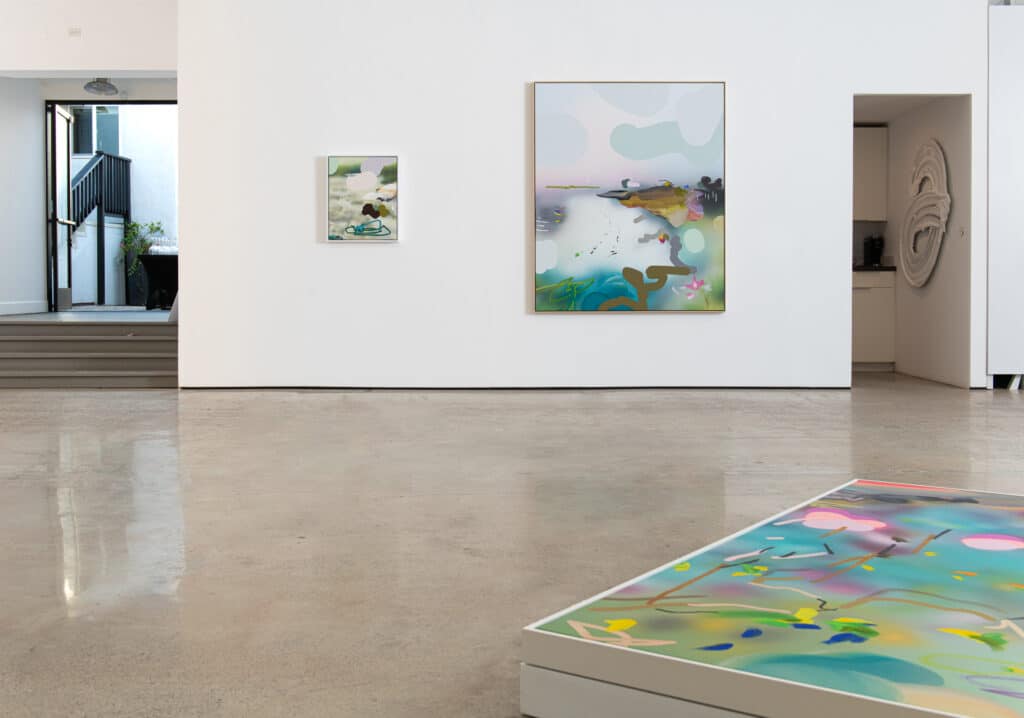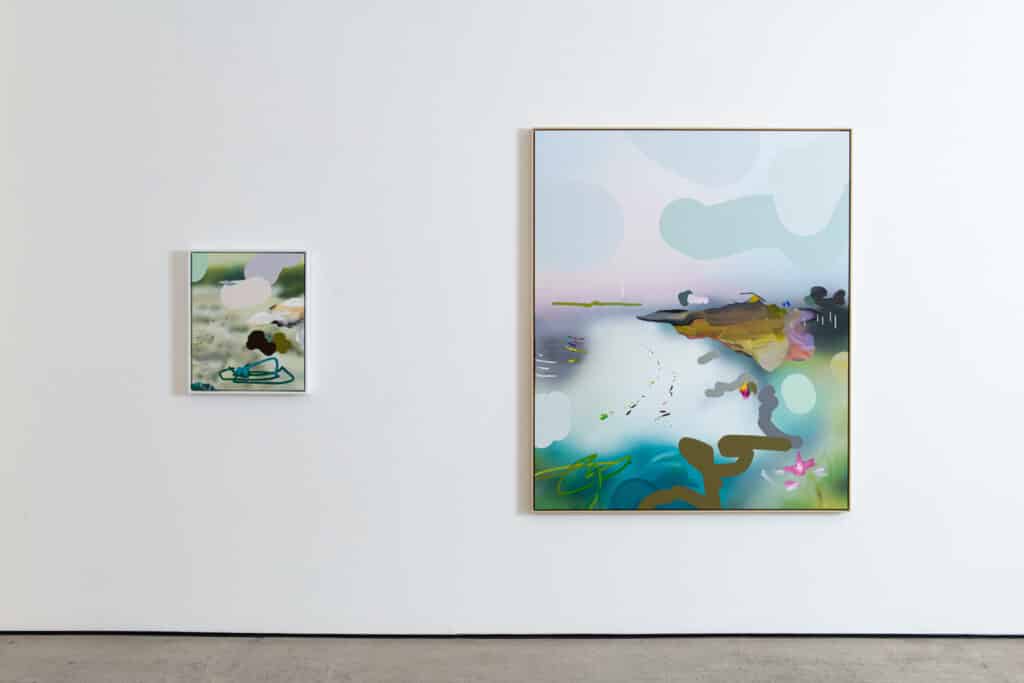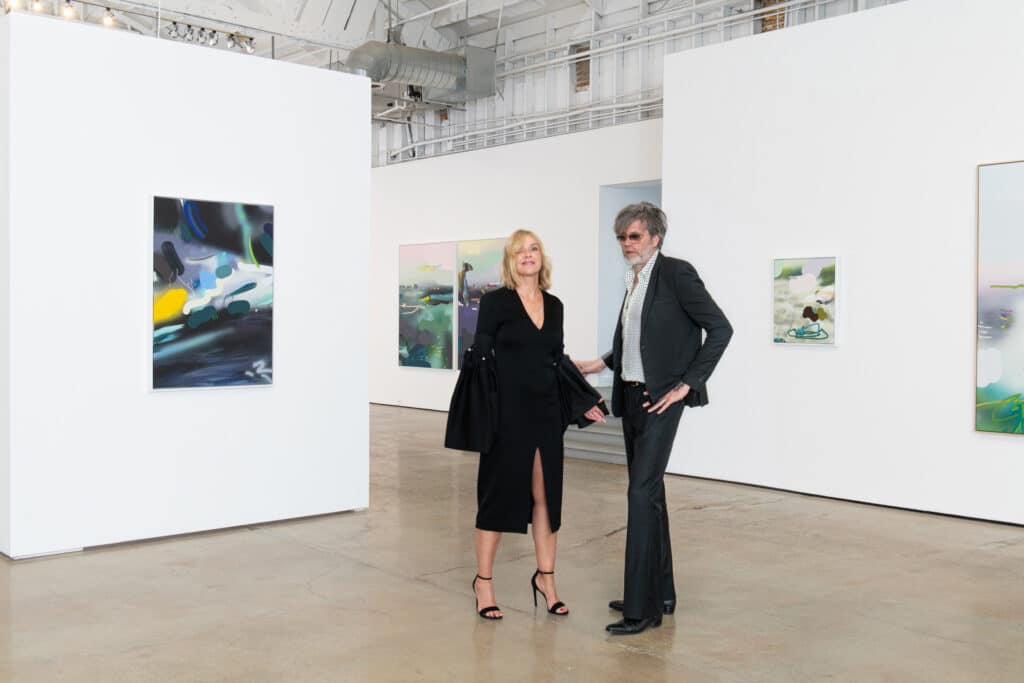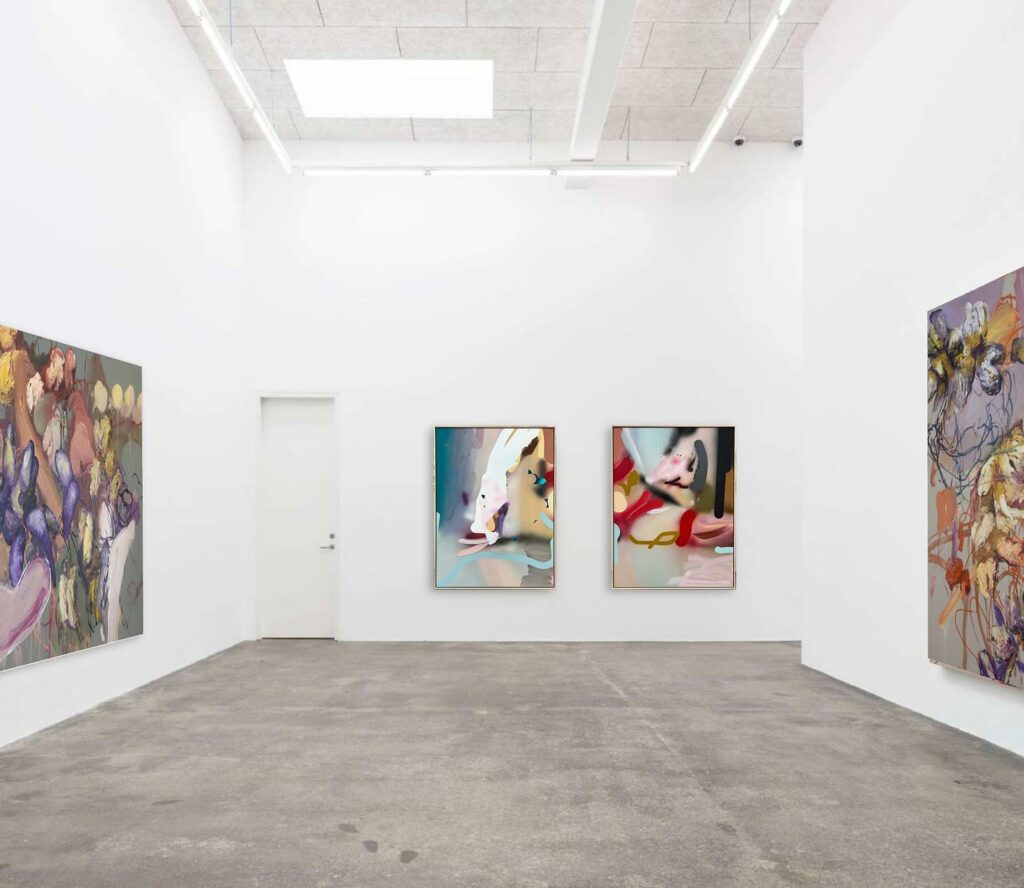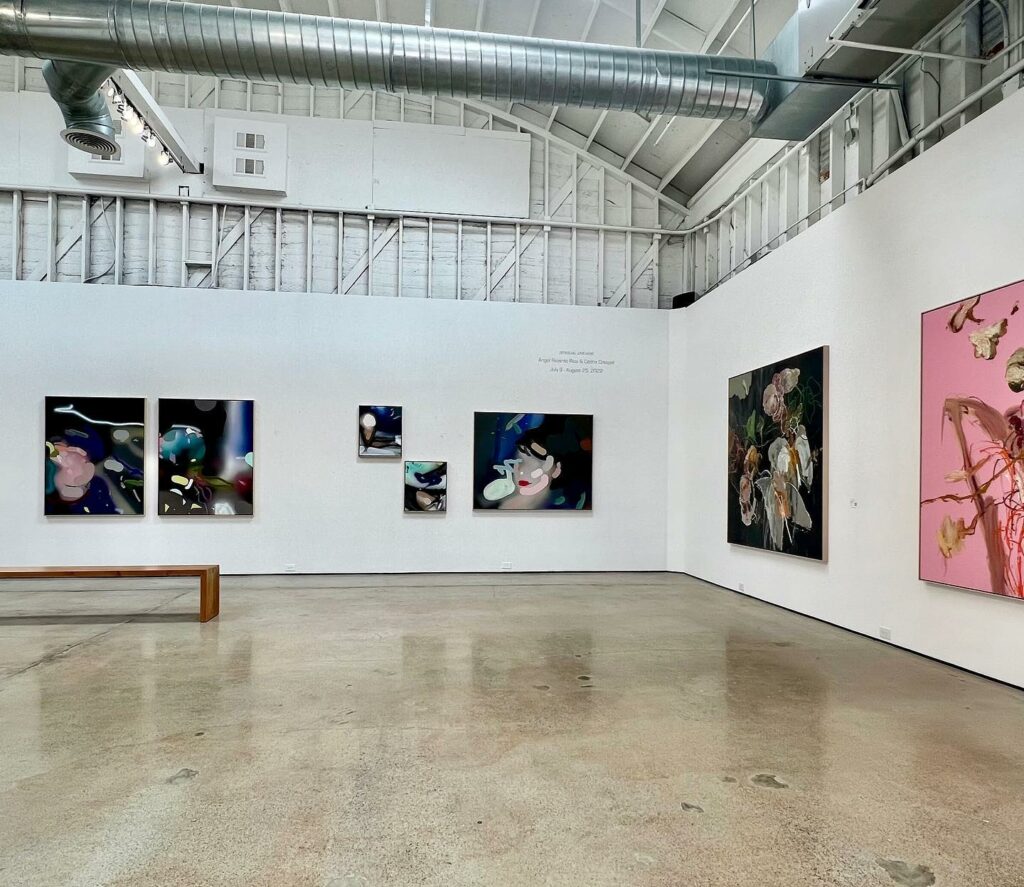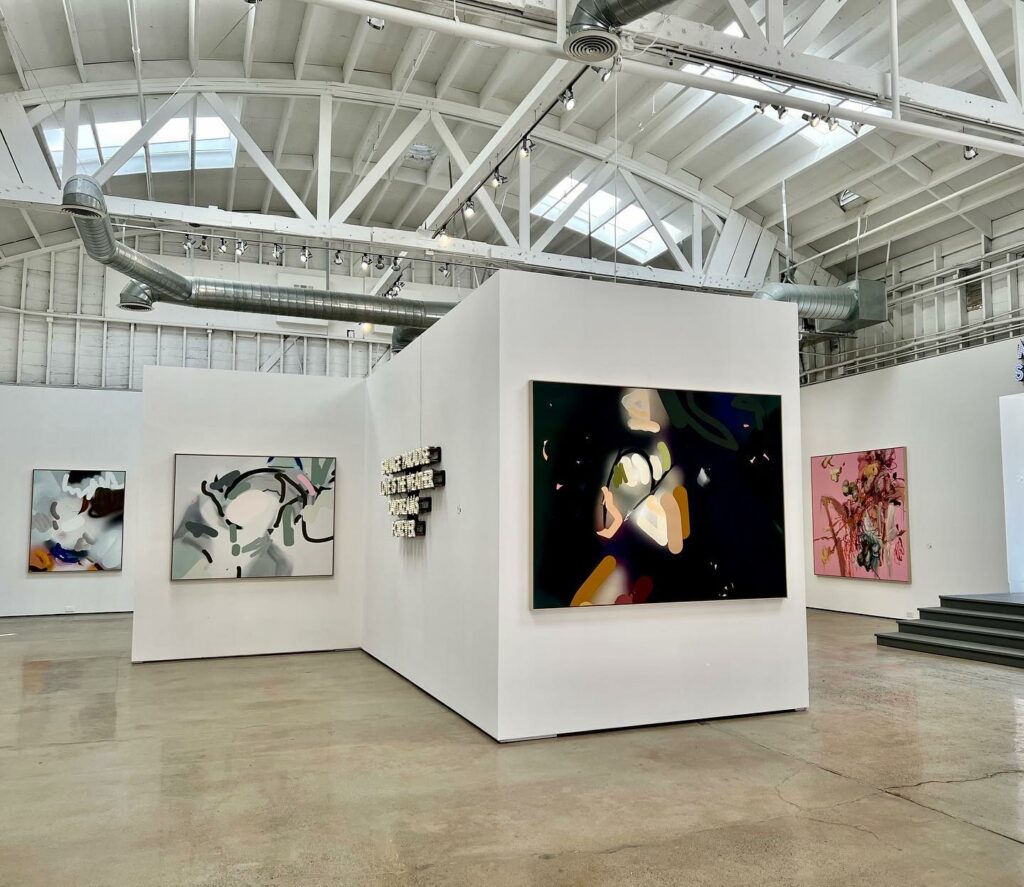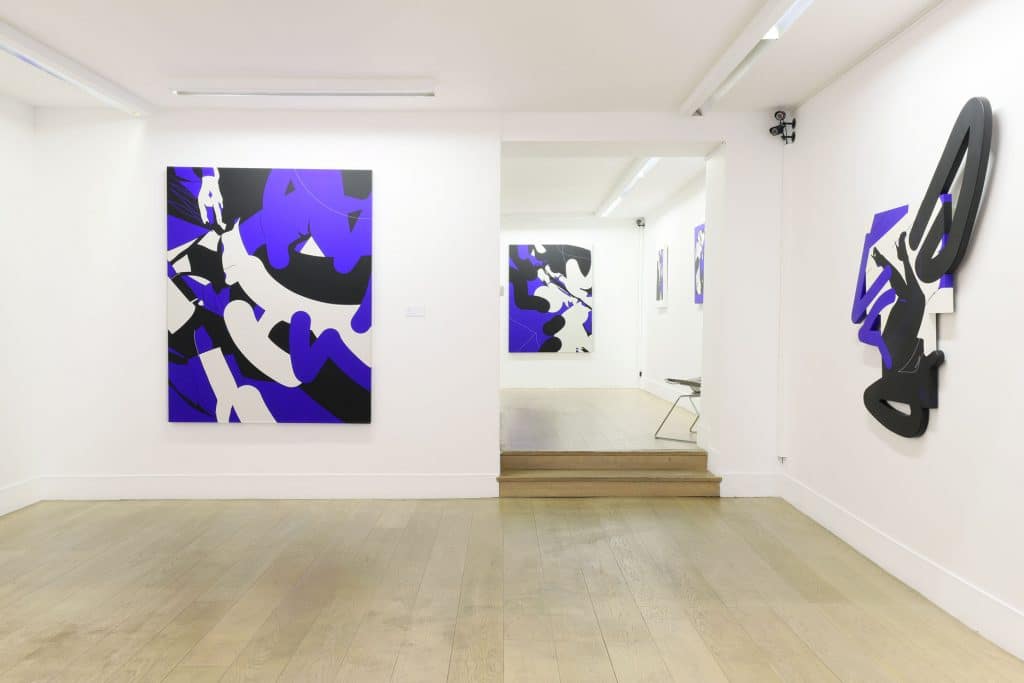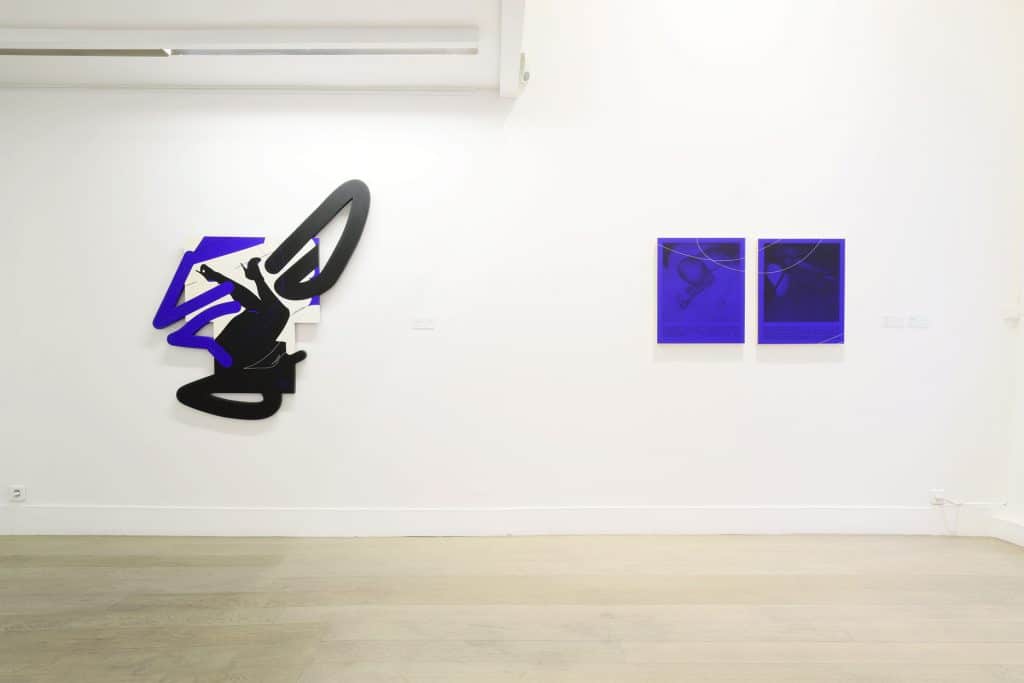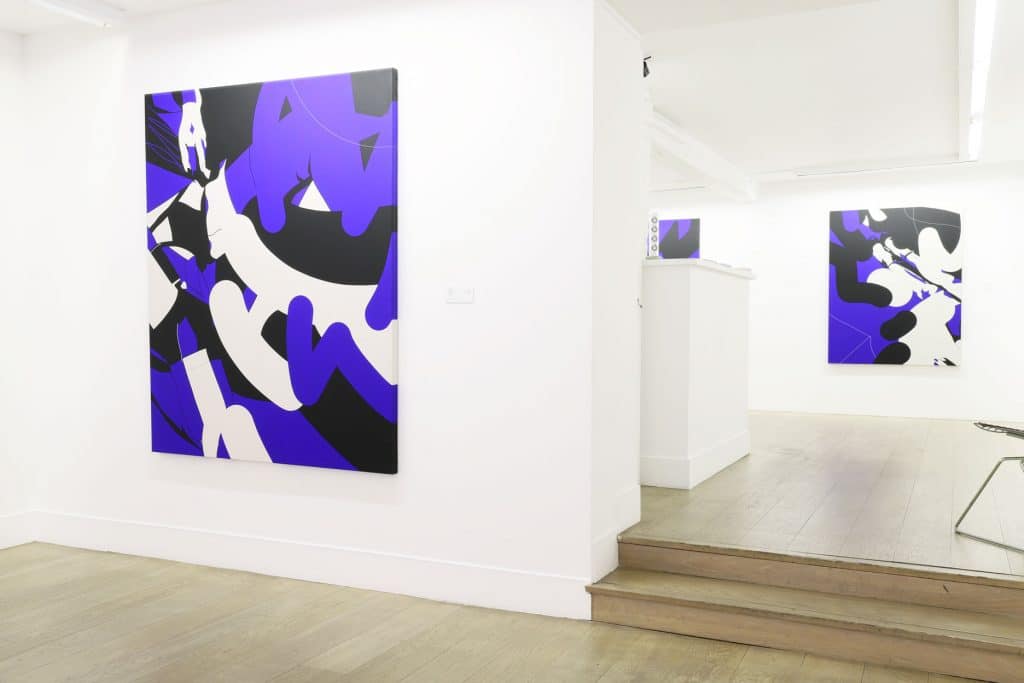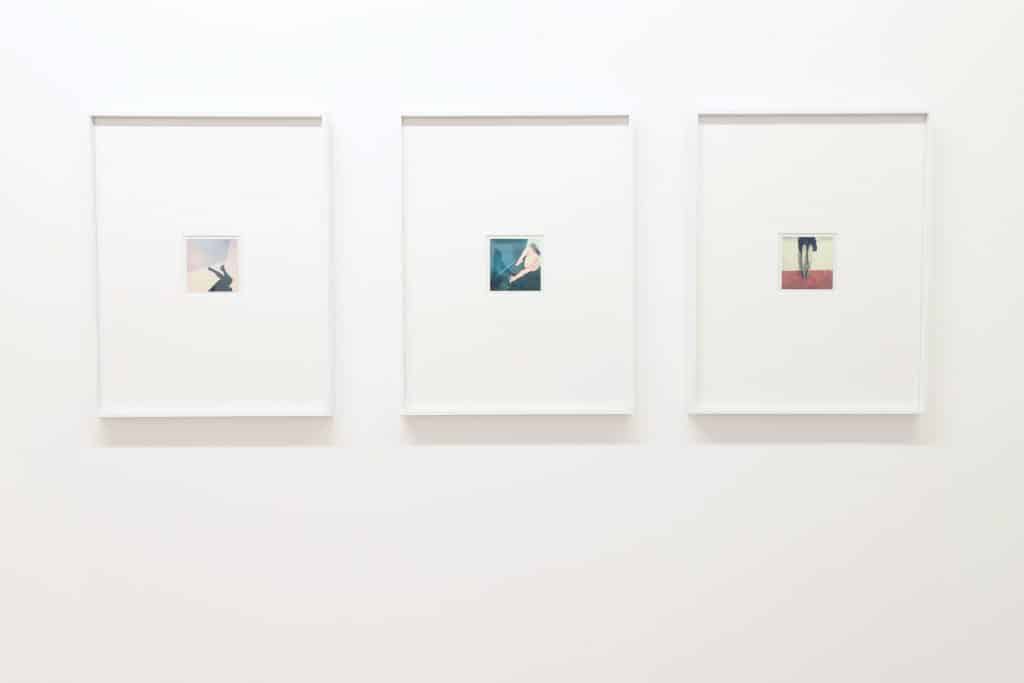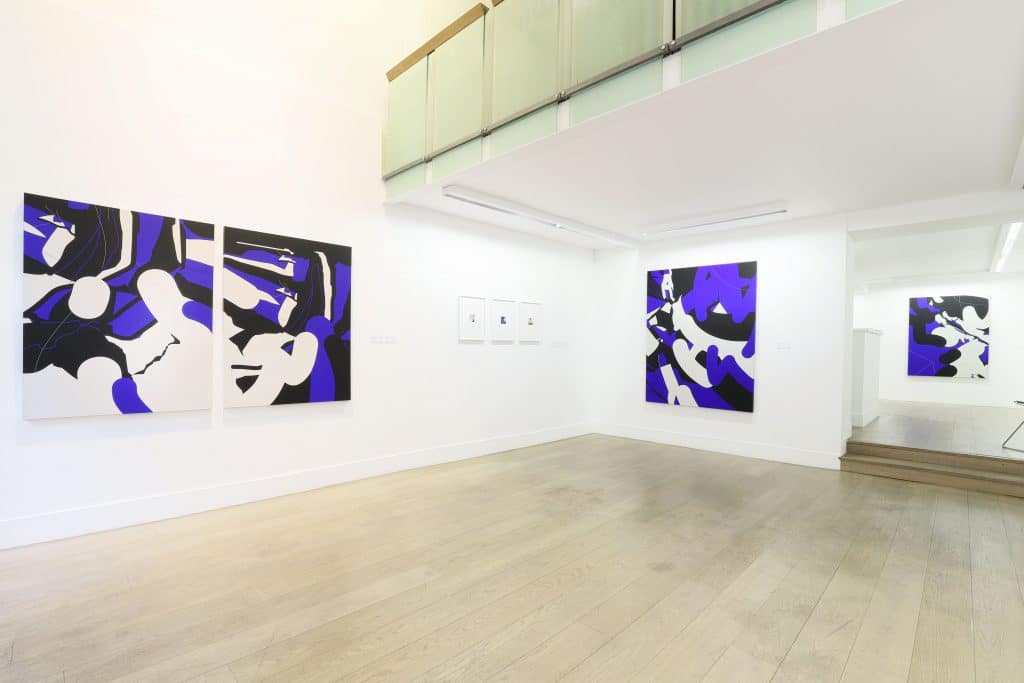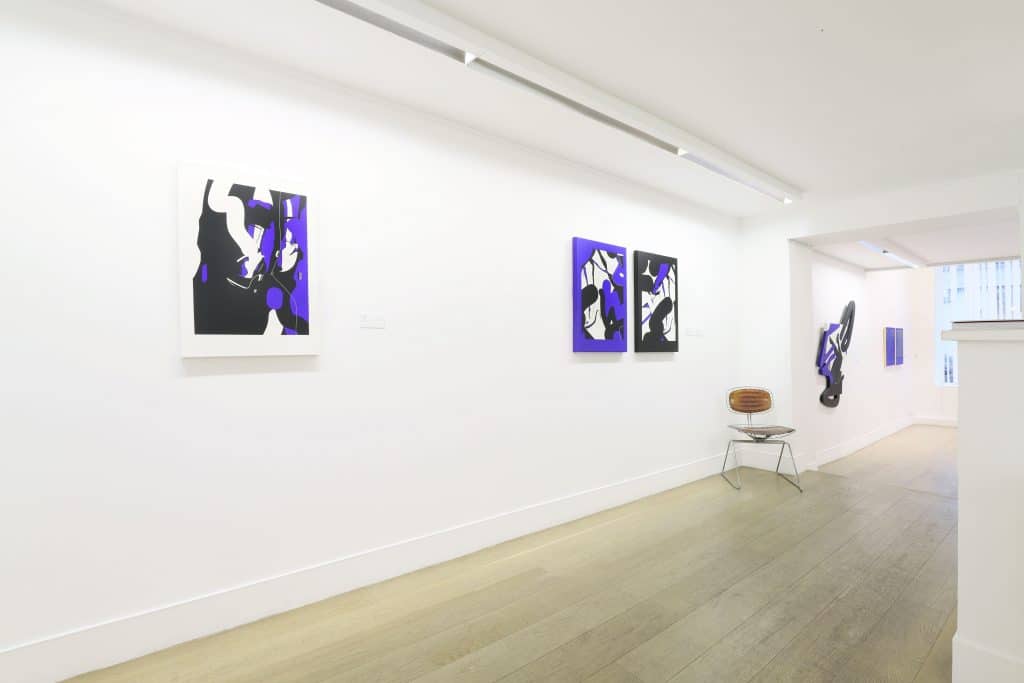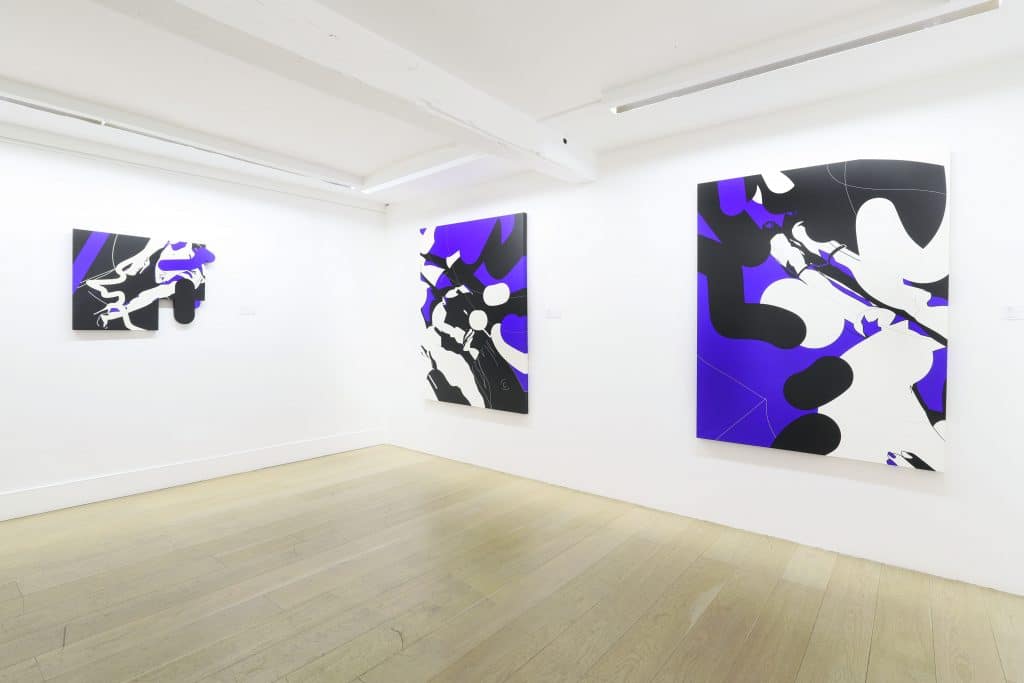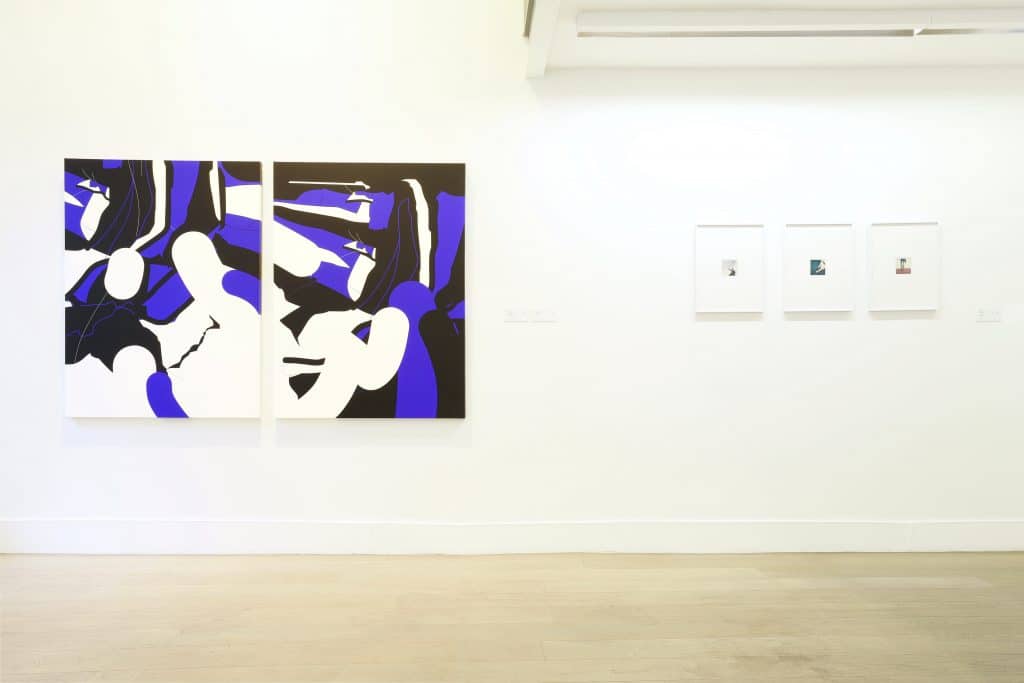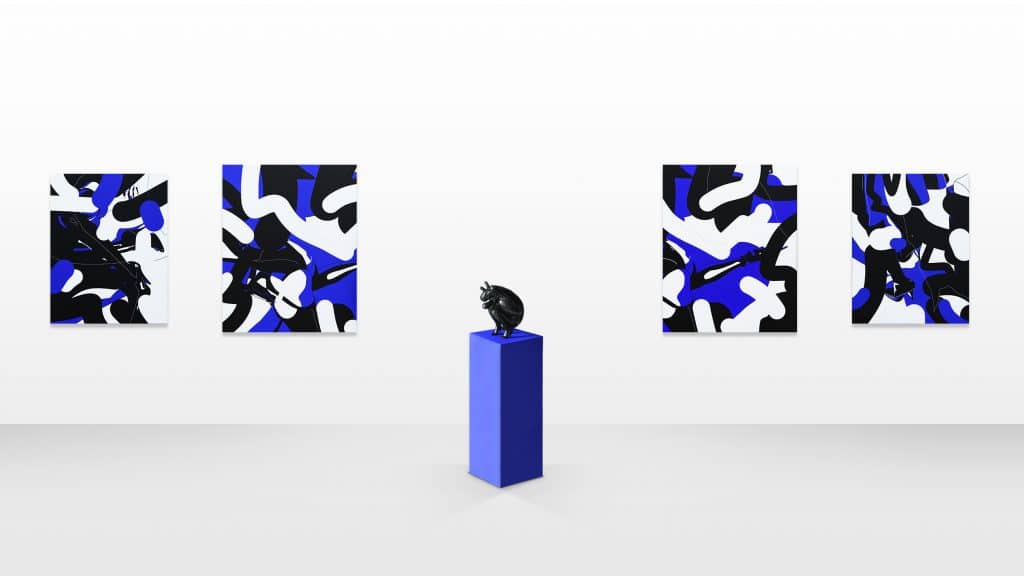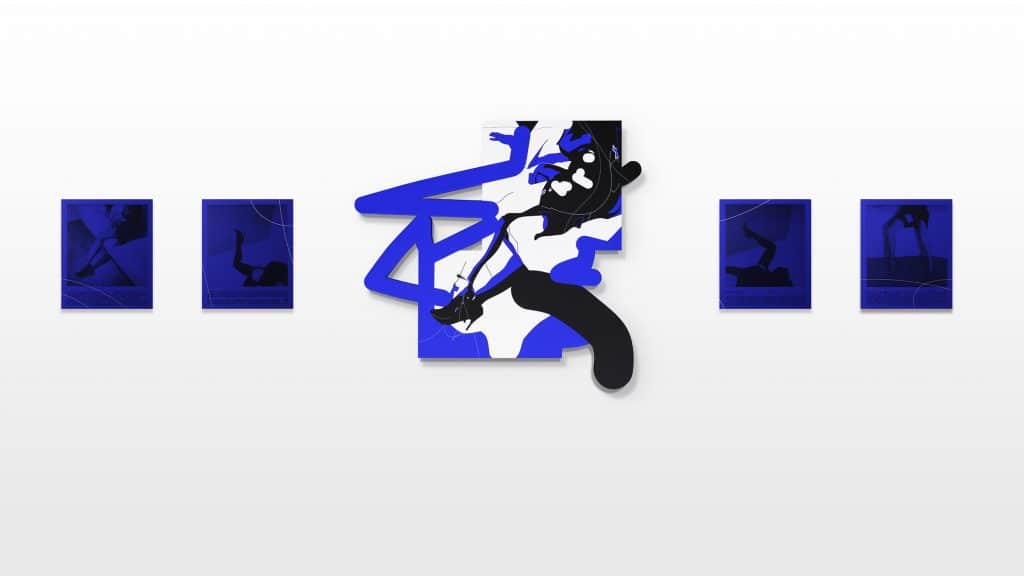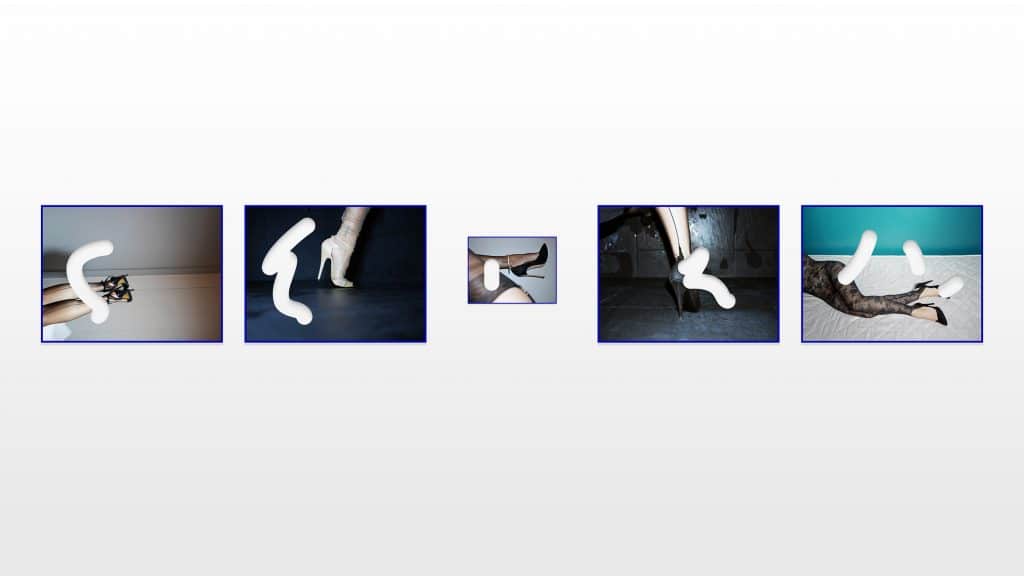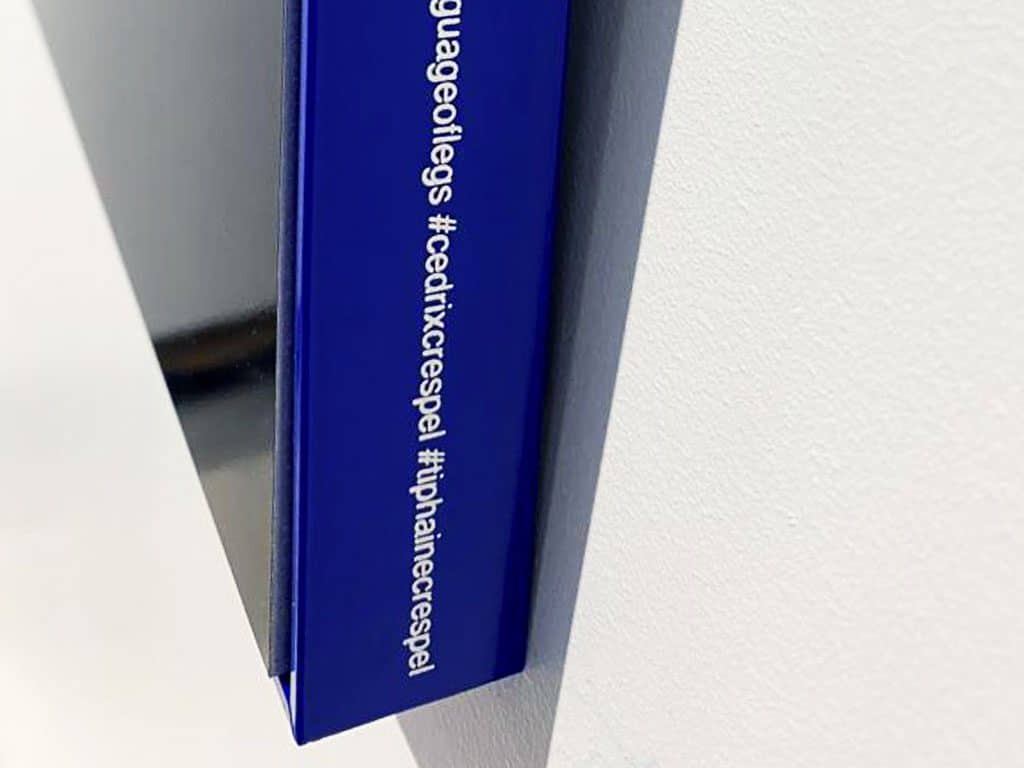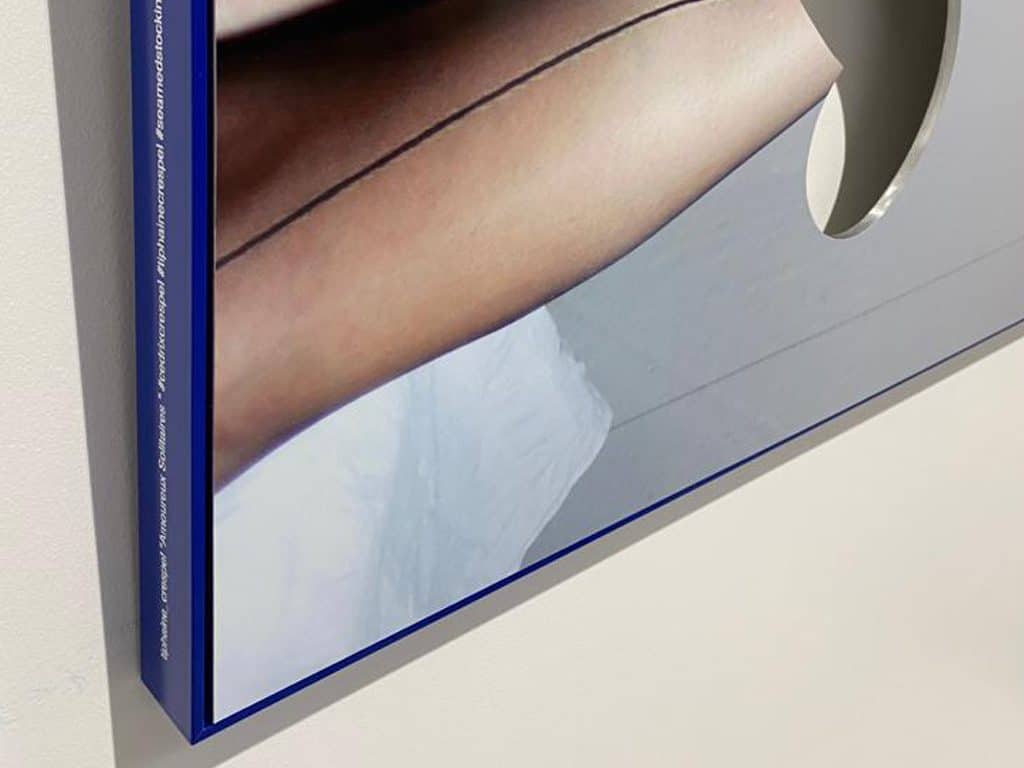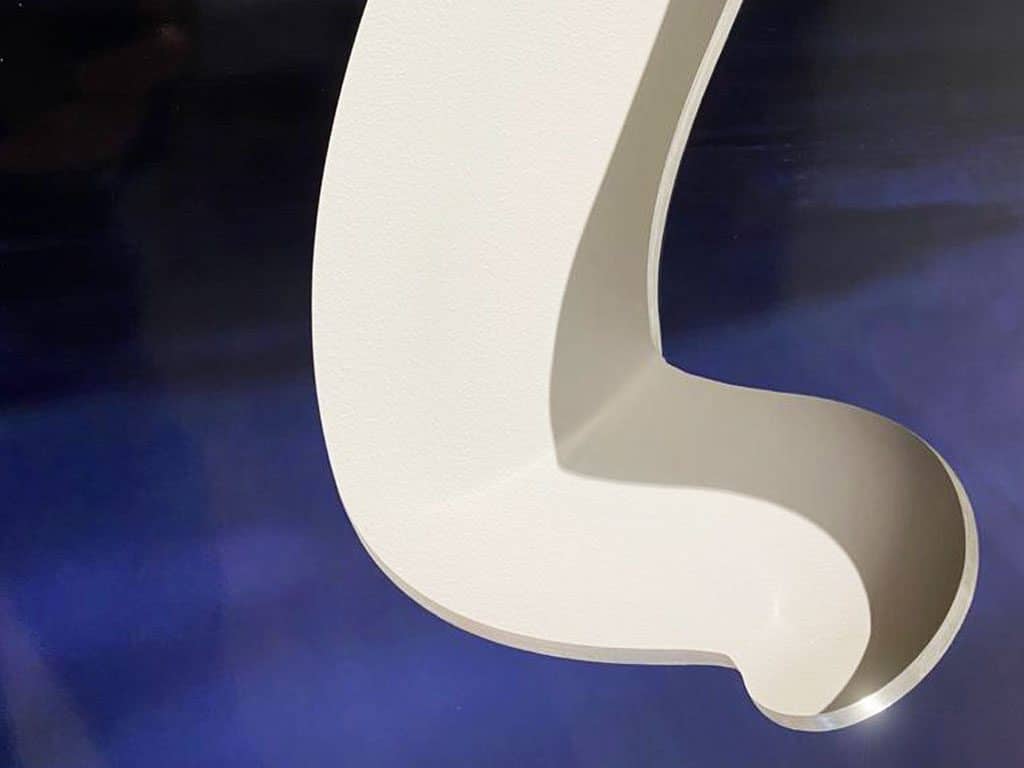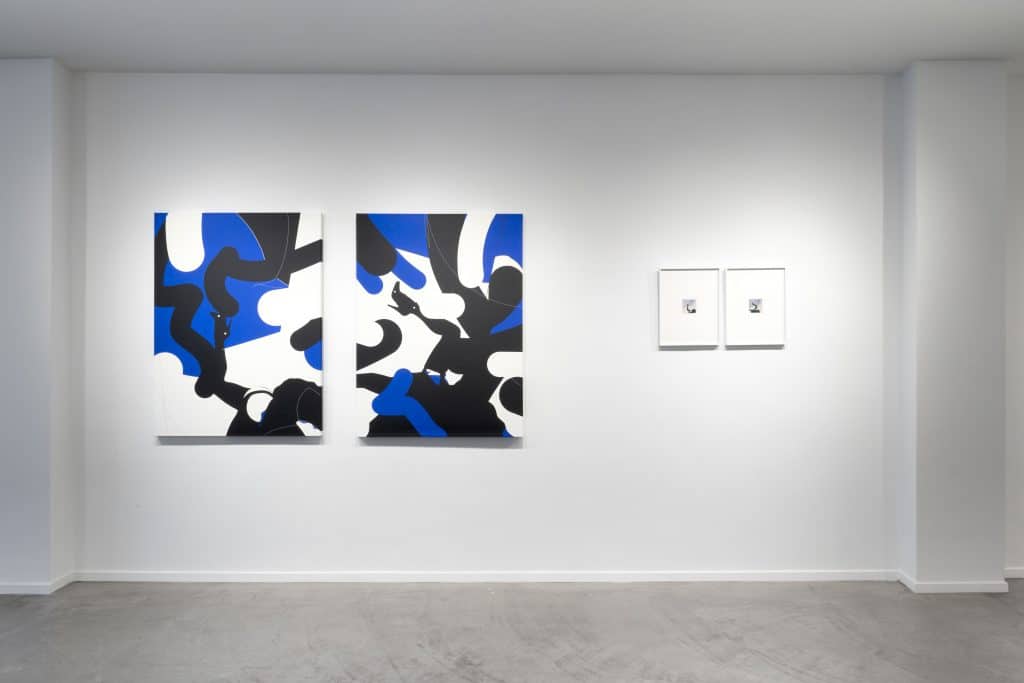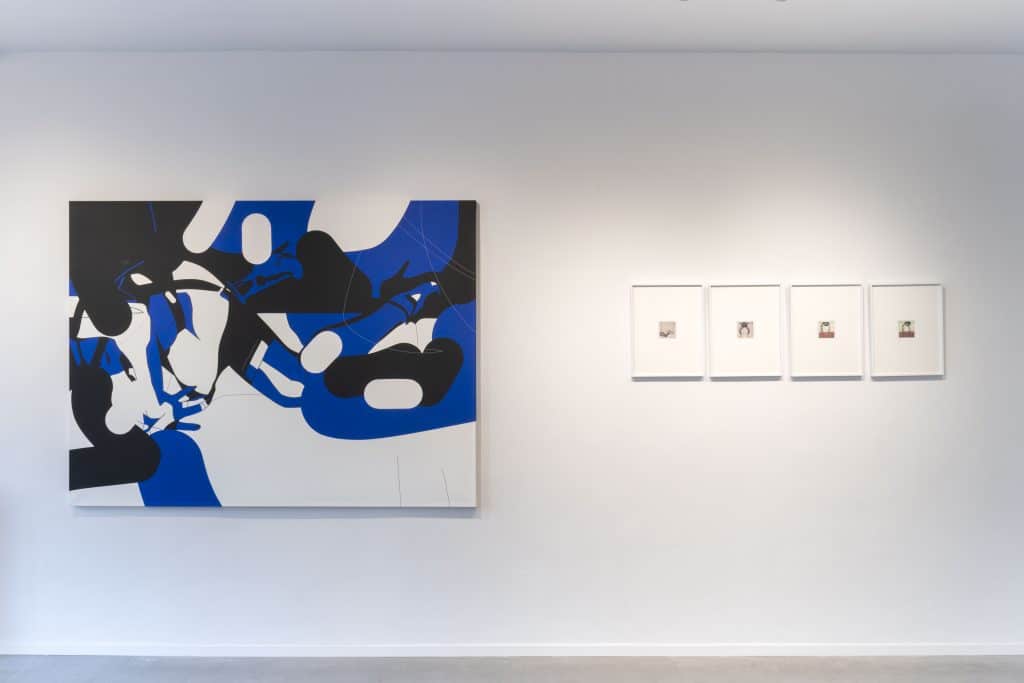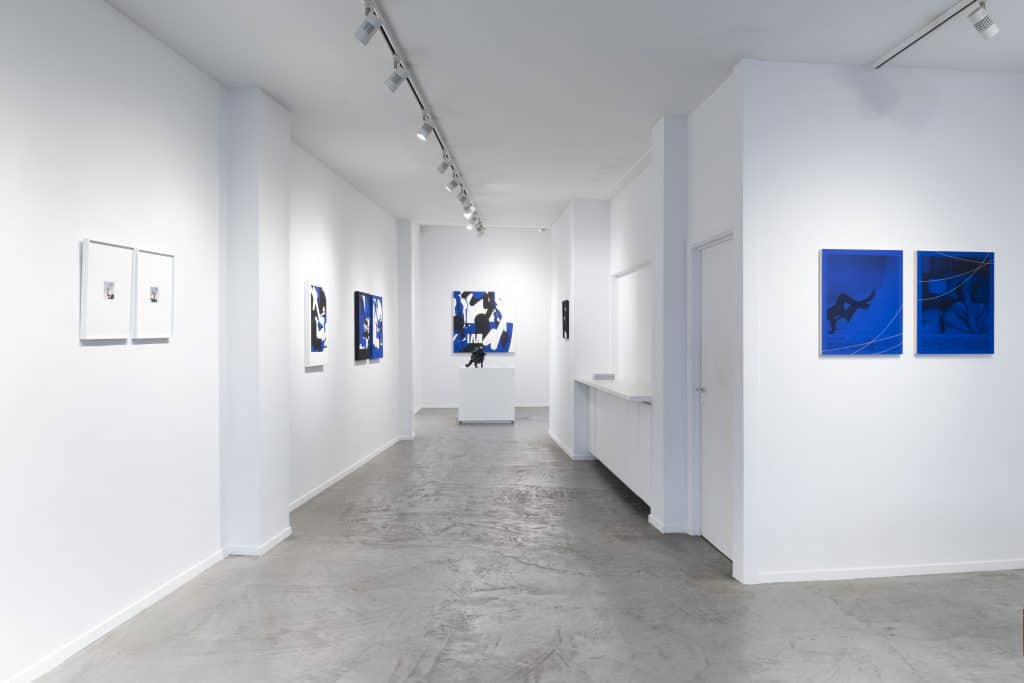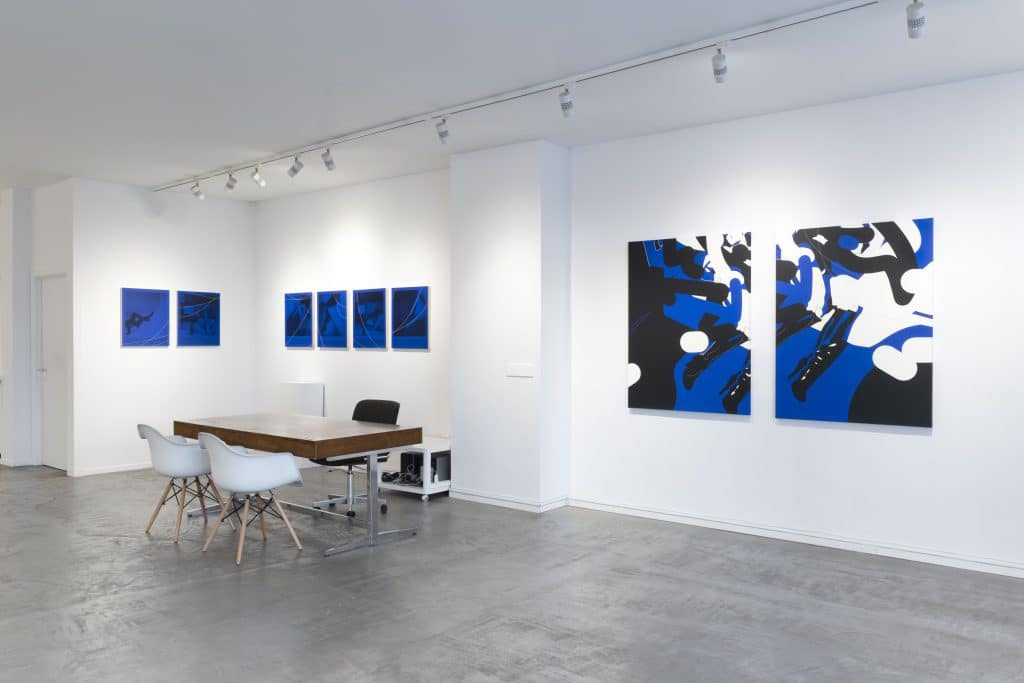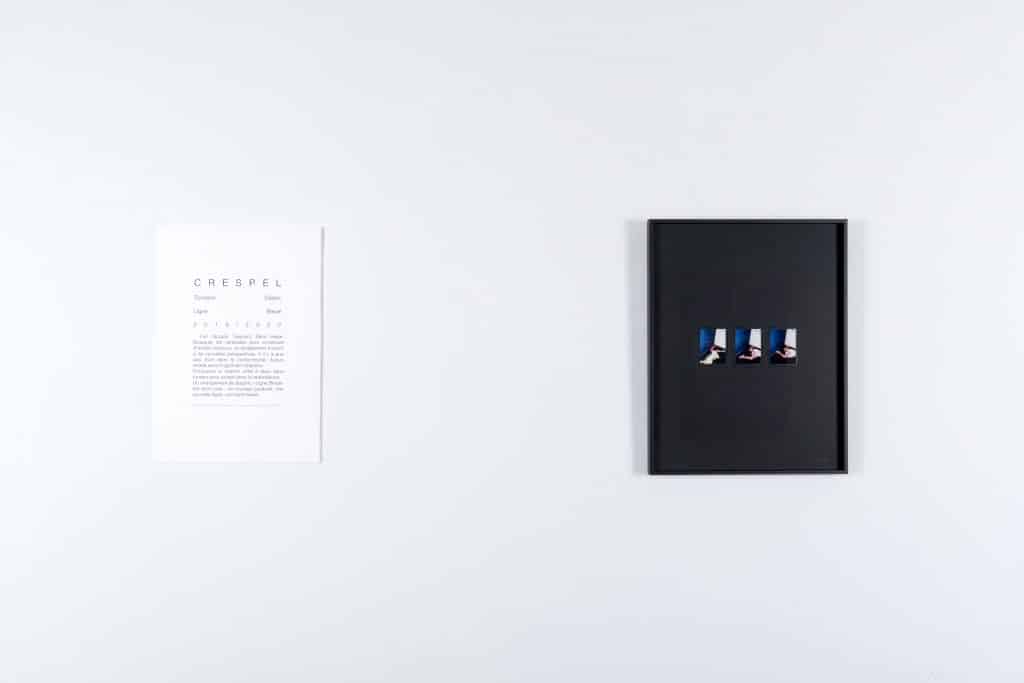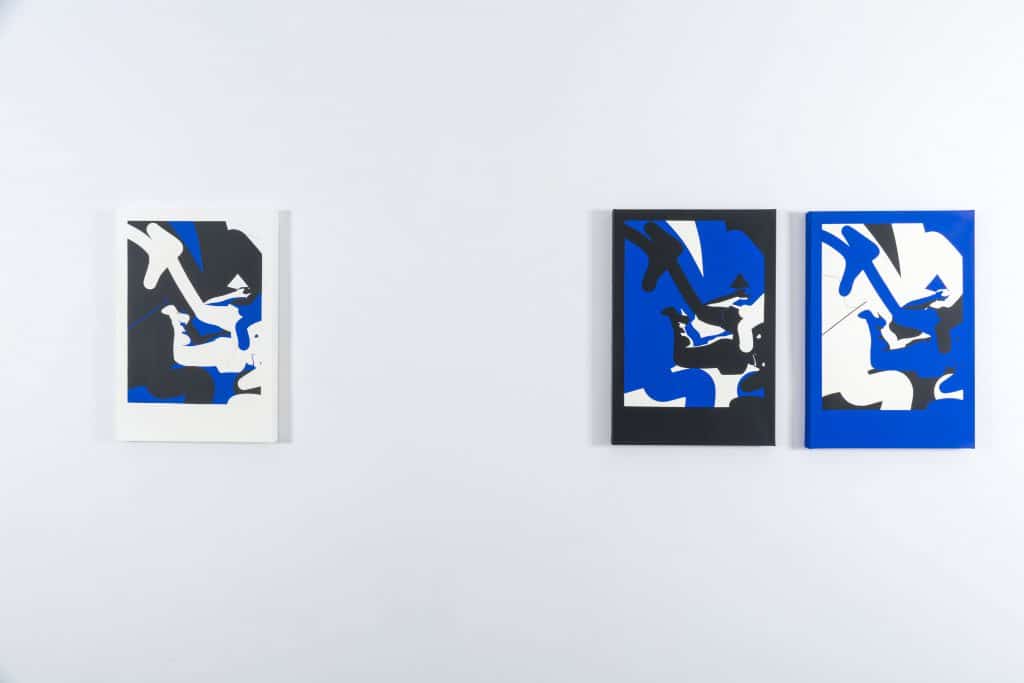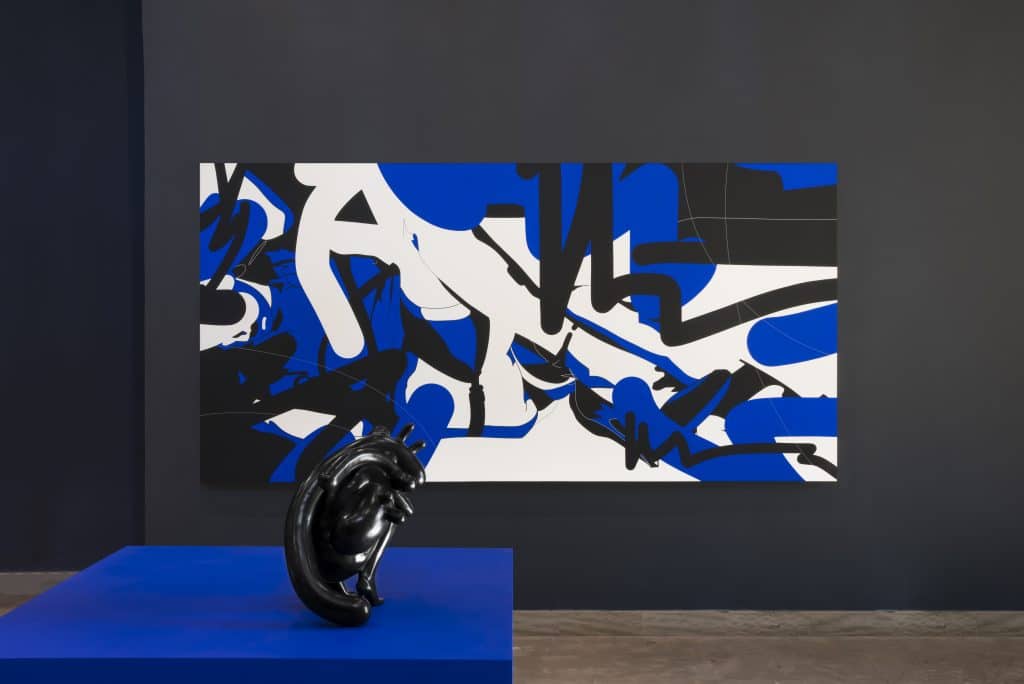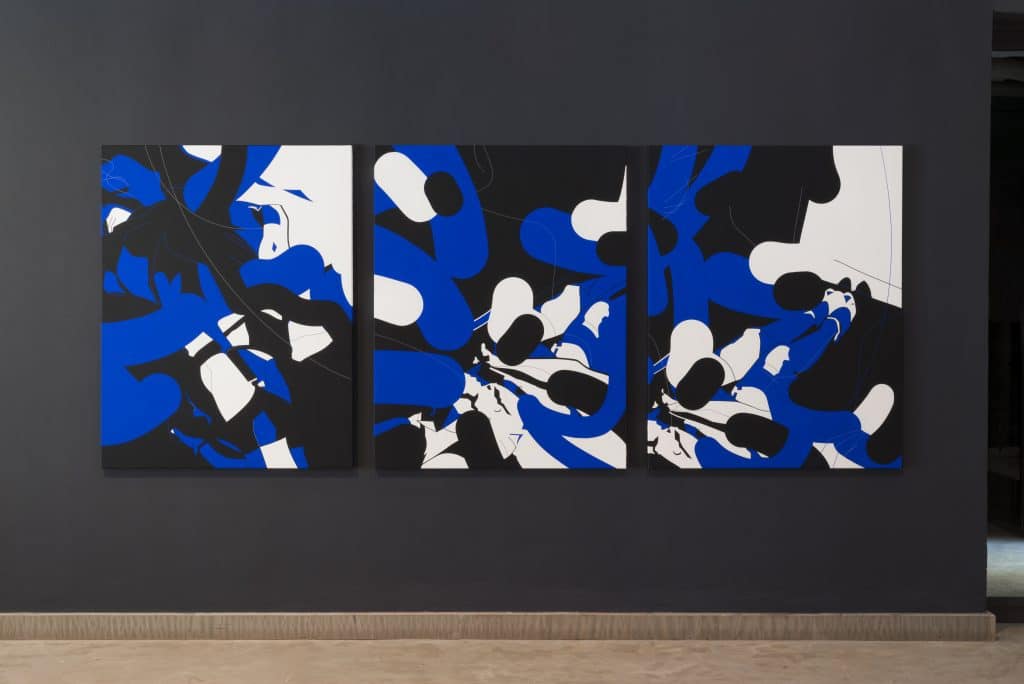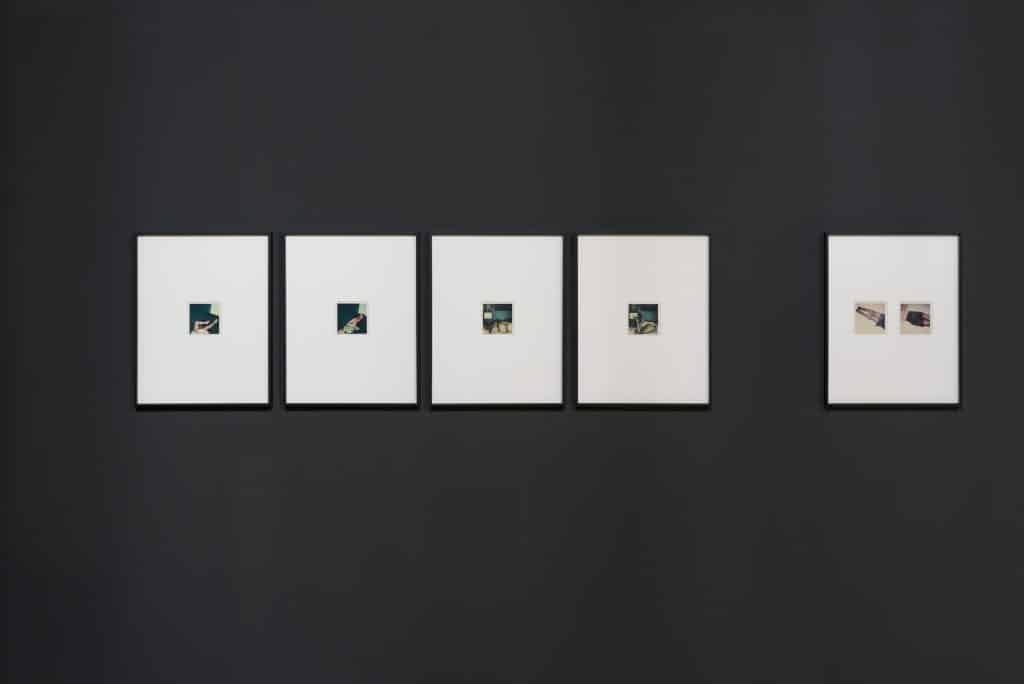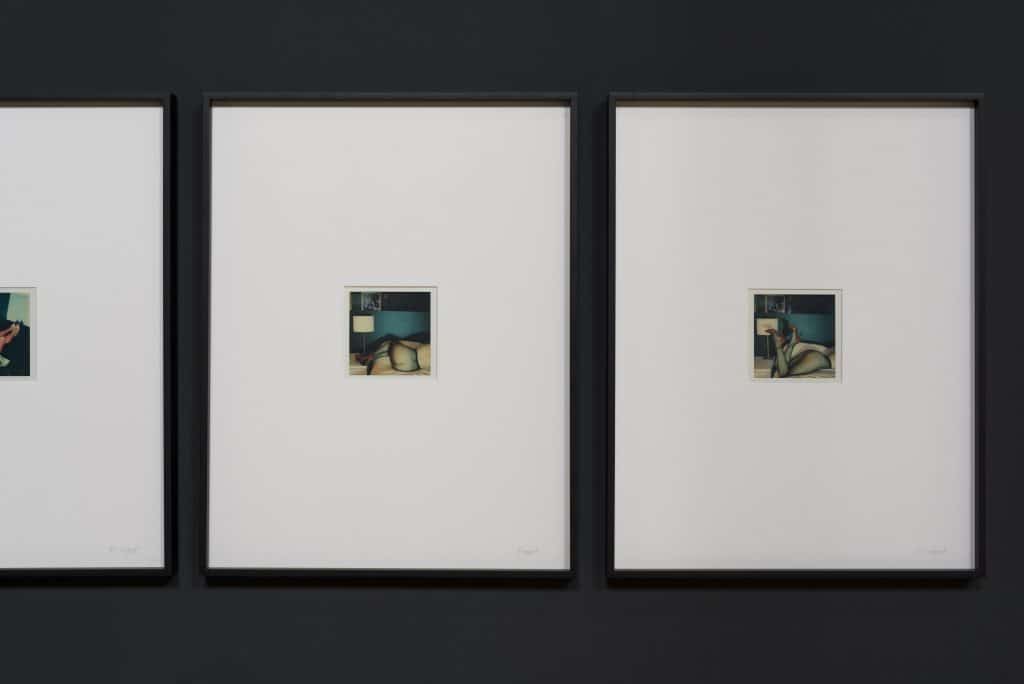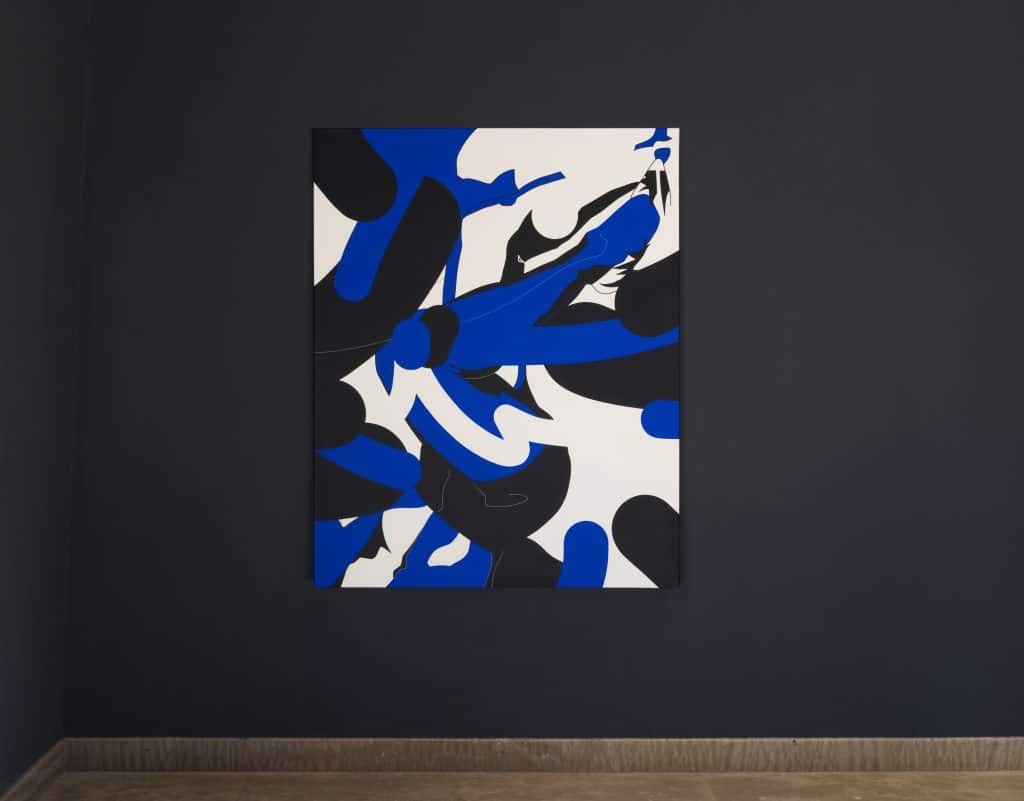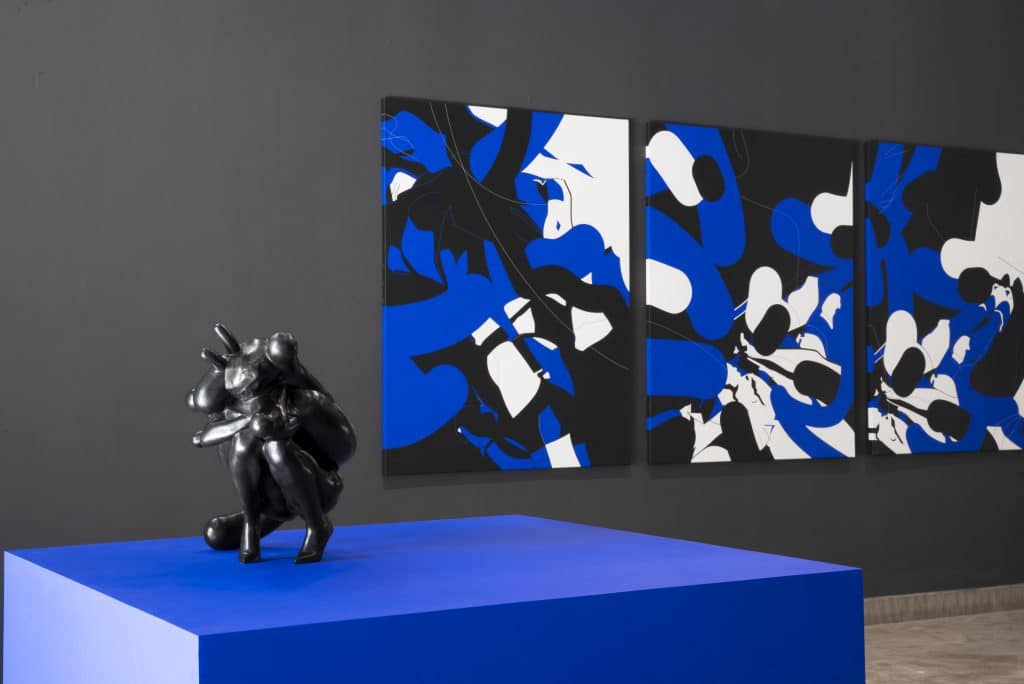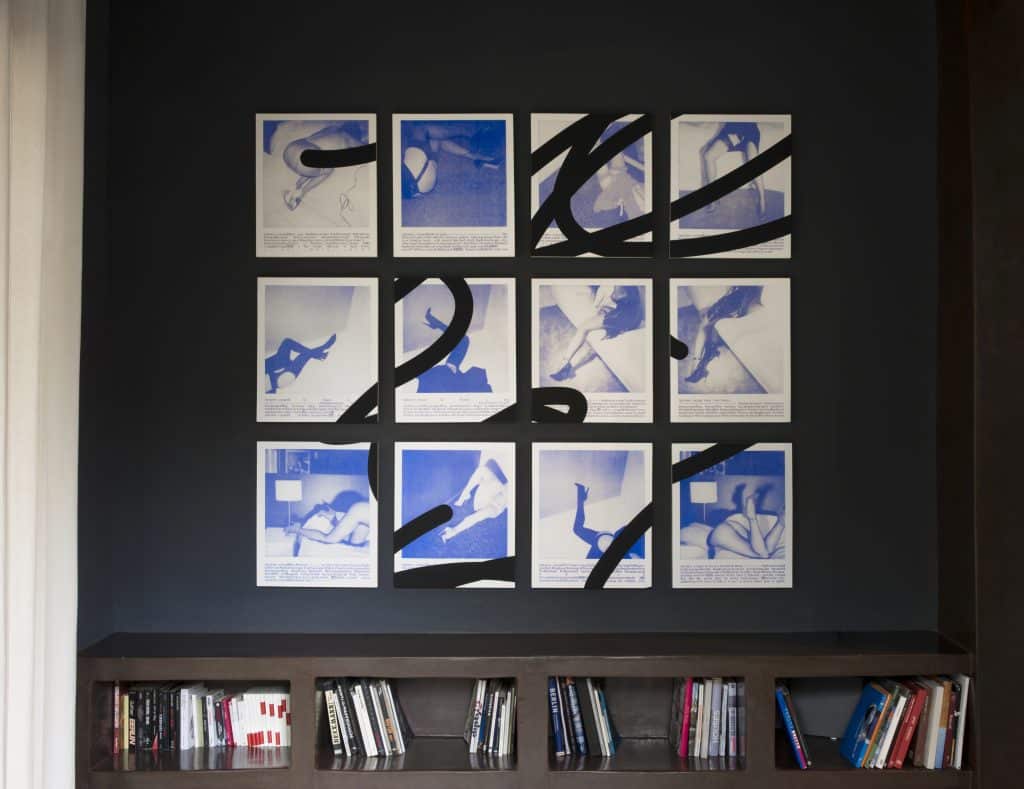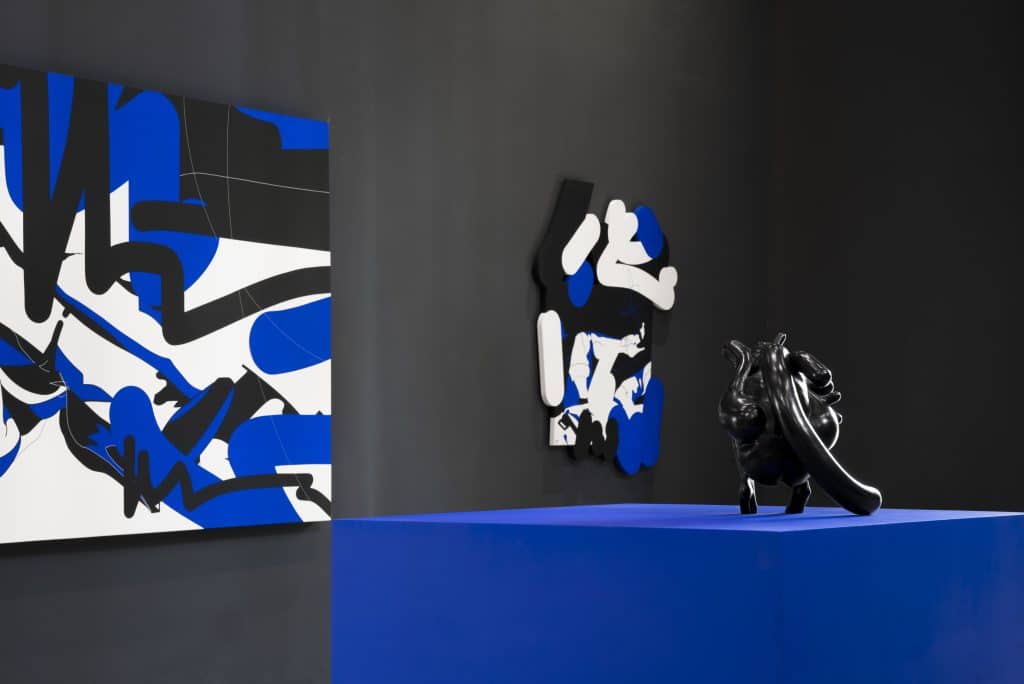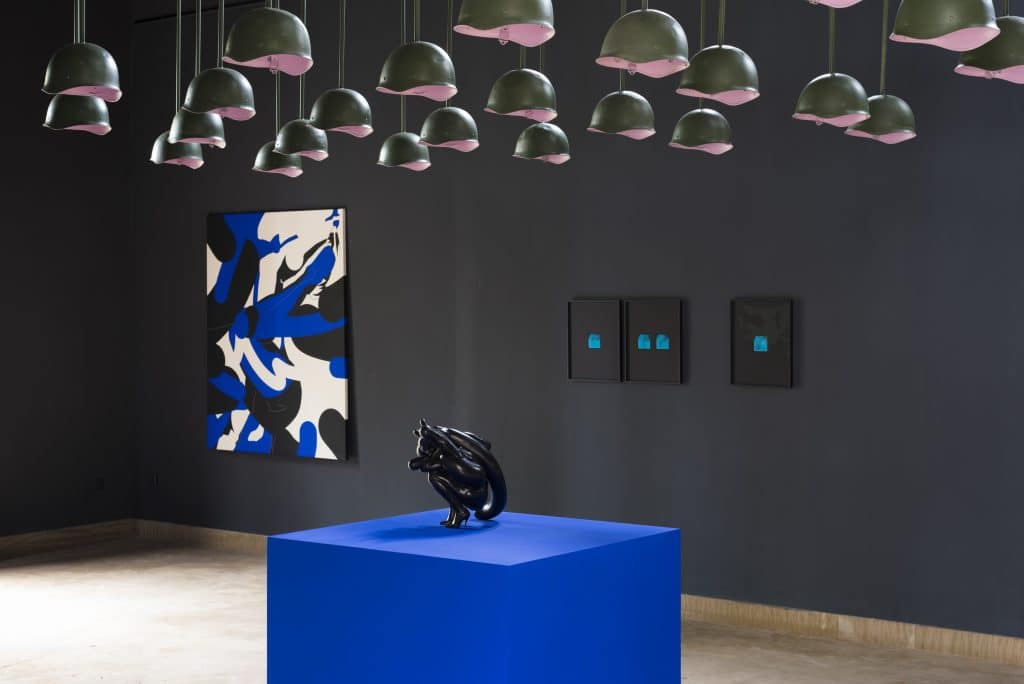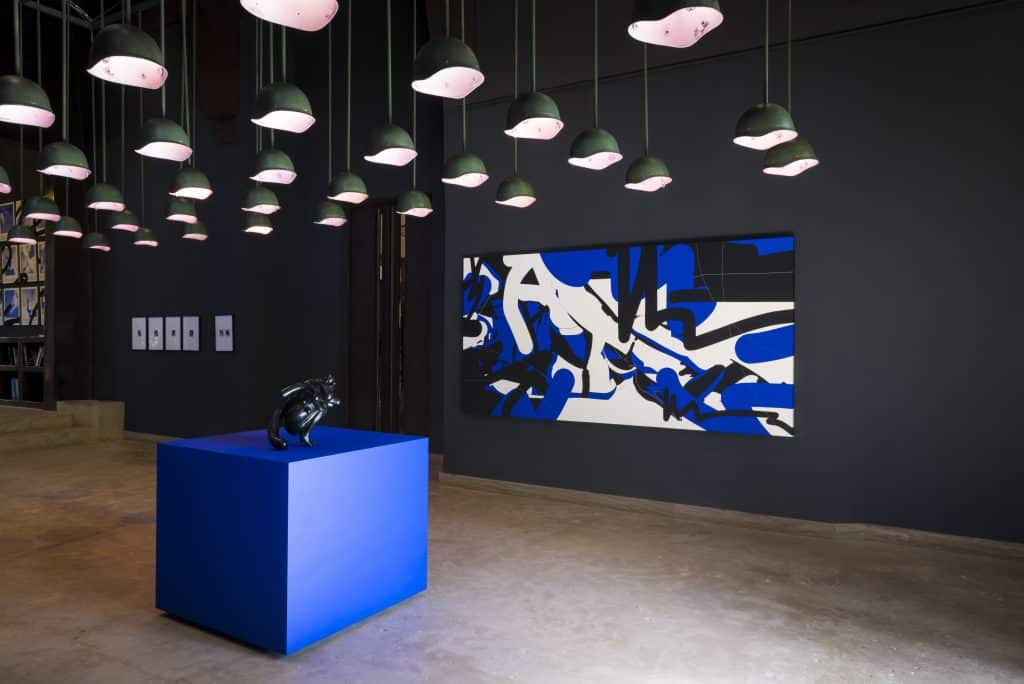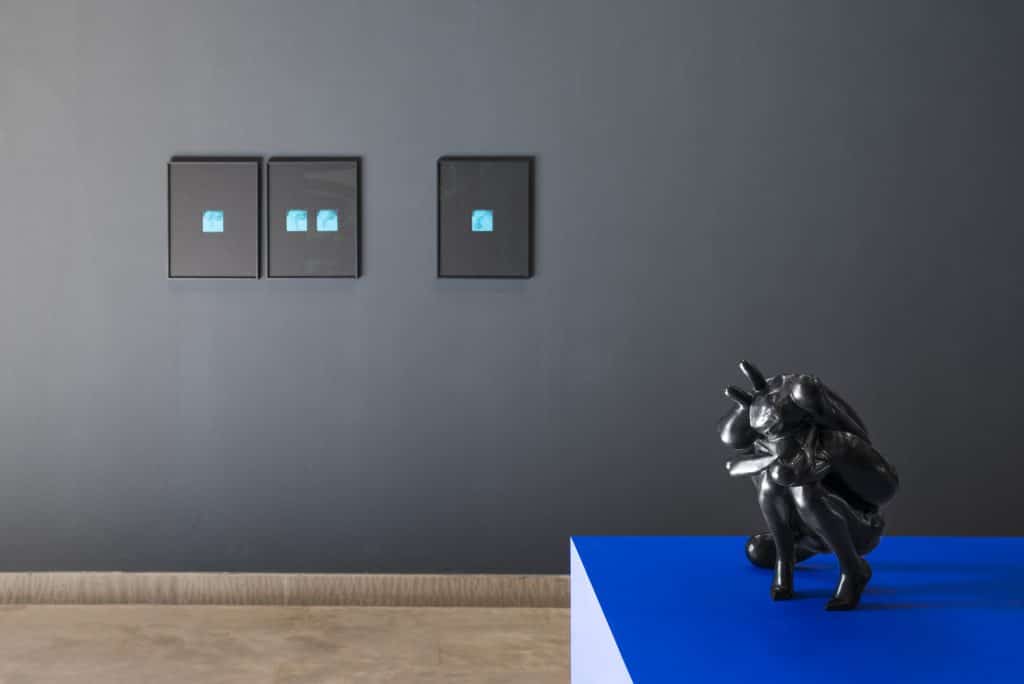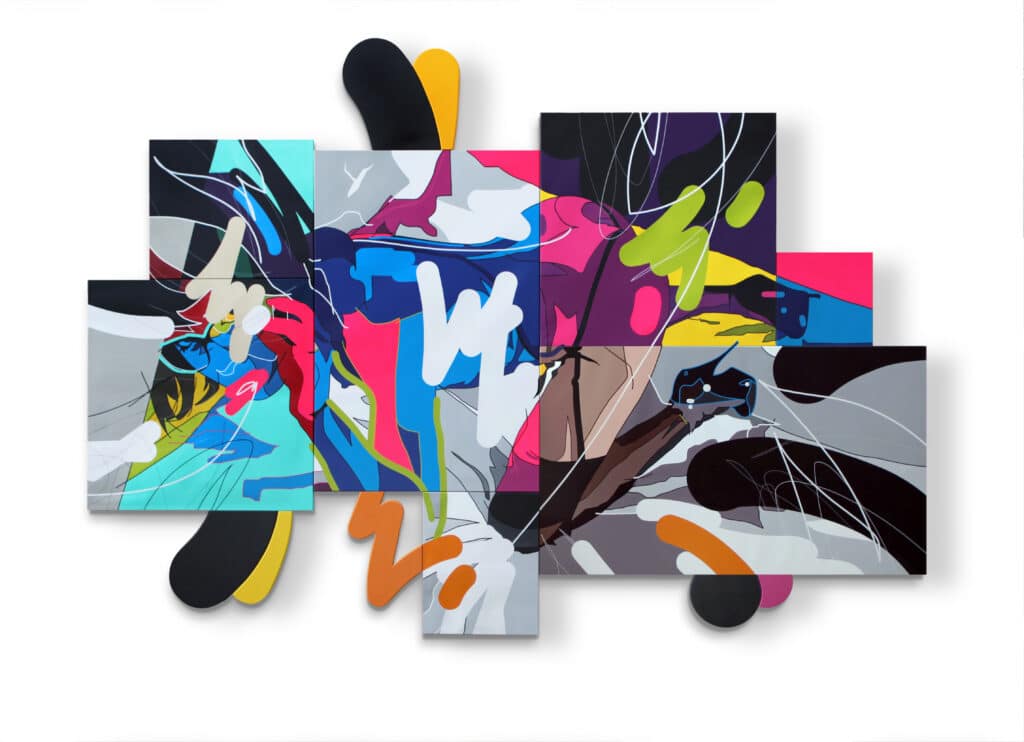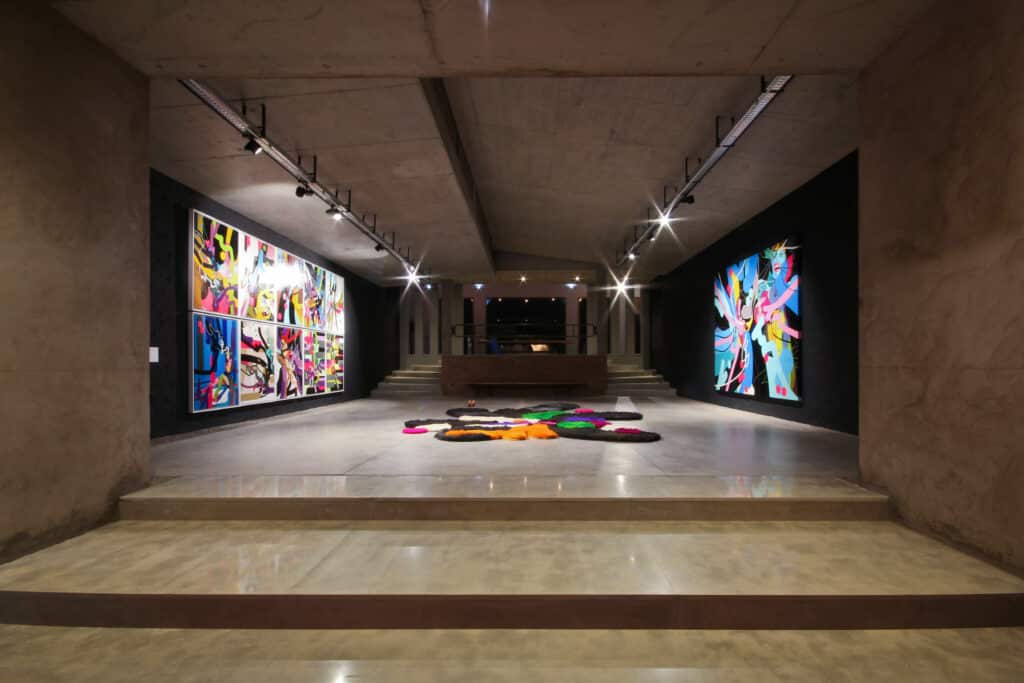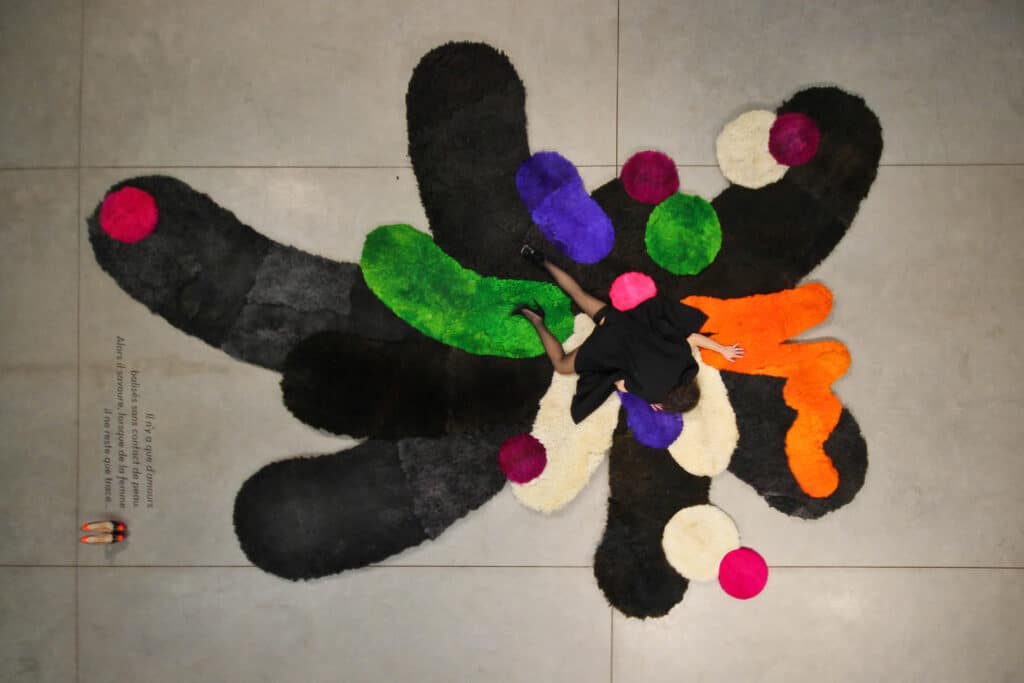Decembre 2023 / Janvier 2024 Montresso Art Foundation Maroc

Il est toujours question de sensation dans l’oeuvre de Cédrix Crespel. Depuis maintenant plus de quatre années, l’artiste se désacommode de sa peinture pour construire une nouvelle grammaire. Le sujet est là, peindre les sentiments ; mais au-delà du visible. Ce qui le concerne, c’est le labile, le tremblant, le papillonnant. Dans un autre désir de la vue, l’artiste tend à représenter la distance pour réinventer le lien entre la figure et le fond, entre l’attente et le plaisir, entre le peintre et l’amante. Pour parler de soi, il doit parler de l’autre, car l’autre l’a construit et le raconter contribue à se raconter. En écho à Platon et la recherche de son double, de son âme-soeur et de l’osmose parfaite, les deux se confondent l’un avec l’autre, en un seul… cette troisième entité. Ce « nous » que lui et elle ont créés, rapporte aussi l’éloignement qui rapproche plus qu’il ne sépare, qui les lie. Cédrix Crespel nous offre cette évocation, une peinture du non-représentable, qui se donne en pointillés. Les toiles sont imposantes, l’étendue entre les rives méditerranéennes, entre les aimés, ne peut s’incarner que sur des grands espaces de restitution.
Loin de ses inspirations premières, on devine l’artiste ployé vers sa muse, on devine aussi la montée du désir dans les paysages qui inondent les tableaux. Auparavant consignés aux marges de ses oeuvres, comme un décor, les paysages soudains s’animent d’un bruissement, d’une rumeur pour décrire les interstices de l’être et dilater le vivant. Il s’agit de dire au plus juste le tissu du sensible, pour faire apparaître par la lumière, la singularité du langage amoureux. Cédrix Crespel vient mettre son regard à l’épreuve du flou, du multiple quitte à s’y aveugler. Nait alors cette conscience aiguë de la puissance du médium, pour, dans un temps suspendu, articuler le figuré au non figuré. L’oeuvre est magistrale dans sa grâce et son intensité. L’artiste reconfigure son histoire pour dévoiler son propre biotope, ses intimes convictions.
Au coeur de tout cela, Cédrix Crespel défocalise ses oeuvres pour laisser venir l’afflux de l’ailleurs et sa fascination pour l’impossible de la peinture. Ses références sont multiples, de Bacon à Monet, de Kajzer à Fox, on pressent le plaisir nouveau de l’oeil. On découvre la jouissance brute du peintre à se perdre dans le mouvement, la passion du jeu scabreux du végétal et de l’eau, la porosité de la matière pour laisser apparaître les formes. Cela requiert pour lui un lâcher prise, un laisser-aller des disparitions et des fluences picturales. Poser les masses et les détails, la transparence et le mat, la couleur et le reflet. En somme, l’apparition des choses recèle une richesse propre qui permet au peintre de se réinventer. Fidèle à son atelier au Maroc à Jardin Rouge, la surprise est de taille, les oeuvres donnent à voir les fragments bouleversants de ce qu’est la peinture, recèlent la délicate émotion de peindre. Esquisser son amante, dans toute l’évidence de ce lieu commun artistique impose la force de la proposition de Cédrix Crespel. Le peintre tient à ses vérités, comme à son aimé, on se sent complices de leur histoire, les suggestions des toiles résonnent avec nos propres idylles, une intimité est entrouverte. Elles témoignent de la fusion à construire une histoire physique et un langage artistique. Intimes Convictions nous livre aussi les secrets de la grandeur de l’être AIME.
Estelle Guillié Directrice Montresso Art Foundation
Sensation always takes center stage in the work of Cédrix Crespel. For more than four years now, the artist has been abandoning traditional painting to construct a new grammar. The subject remains the same: capturing emotions, but going beyond the visible. What concerns him are the fleeting, the trembling, the ephemeral. With a different approach, the artist aims to represent distance to reinvent the connection between the subject and the background, between anticipation and pleasure, between the painter and the beloved. To speak about oneself, one must also speak about the other because the other has played a role in shaping one’s identity, and narrating this interaction contributes to self-understanding. In echoing Plato and his quest for a doppelgänger, a soulmate, and perfect harmony, they intertwine with each other, becoming one… a third entity. This “we” that they have created also mirrors the distance that, rather than separating them, brings them closer and binds them together. Cédrix Crespel offers us this evocation, a representation of the unrepresentable, presented in a fragmented manner. The canvases are grand, capturing the vast expanse between the Mediterranean shores and the beloved ones.
Far from his initial inspirations, we can sense the artist leaning towards his muse, and we also detect the rise of desire in the landscapes that fill his paintings. Previously relegated to the margins of his works, like a backdrop, the sudden landscapes come to life with a rustling, a murmur, describing the spaces between beings and expanding life itself. The goal is to express the essence of the senses as accurately as possible, to reveal through light the uniqueness of the language of love. Cédrix Crespel challenges his gaze with blurriness and multiplicity, even if it means blinding himself. This acute awareness of the power of the medium emerges, allowing him to articulate the figurative and the non-figurative in suspended time. The work is masterful in its grace and intensity. The artist reconfigures his history to unveil his own ecosystem and intimate beliefs.
In the midst of all this, Cédrix Crespel incorporates defocused elements into his works to allow the external influx and his fascination with the impossible in painting. His references are diverse, from Bacon to Monet, from Kajzer to Fox; one can sense the newfound pleasure of the eye. We discover the raw joy of the painter in losing himself in movement, the passion for the intricate interplay of vegetation and water, the porosity of the material to reveal forms. This requires letting go, allowing the disappearance and flow of visual elements. Balancing volumes and details, transparency and matte, color and reflection. In essence, the emergence of things holds a richness that allows the painter to reinvent himself. Remaining faithful to his studio in Morocco at Jardin Rouge, the surprise is profound; the works reveal the poignant fragments that constitute the essence of painting, conveying the delicate emotions of the artistic process. Portraying his lover, in the vividness of this shared artistic space, underscores the strength of Cédrix Crespel’s artistic vision. The painter clings to his truths, just as he does to his beloved; we feel like co-conspirators in their shared narrative. The suggestions in the canvases resonate with our own love stories, creating a sense of intimacy. They bear witness to the fusion of constructing a tangible narrative and an artistic language. “Intimes Convictions” also reveals the secrets of the greatness of being loved.
Estelle Guillié Directrice Montresso Art Foundation









